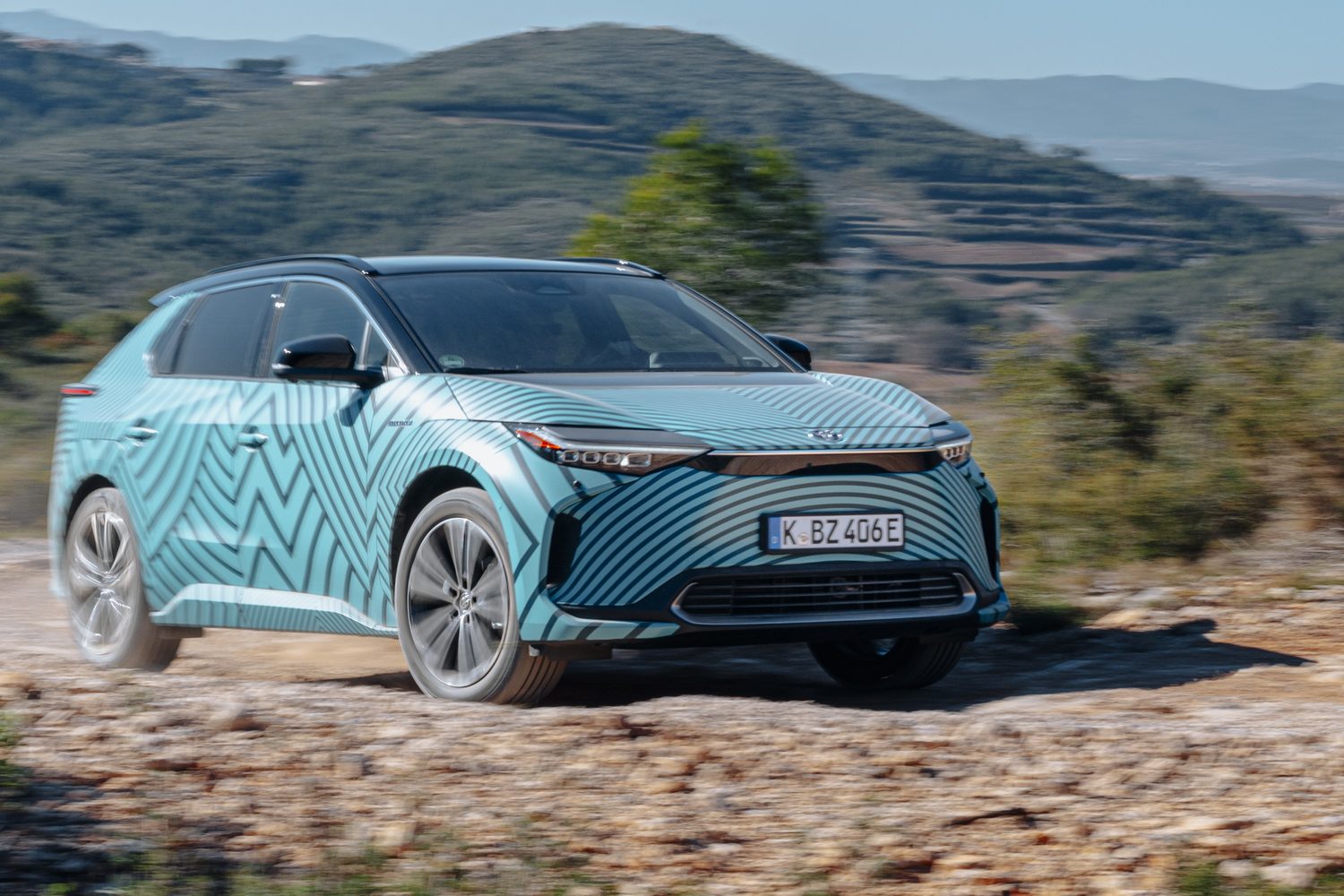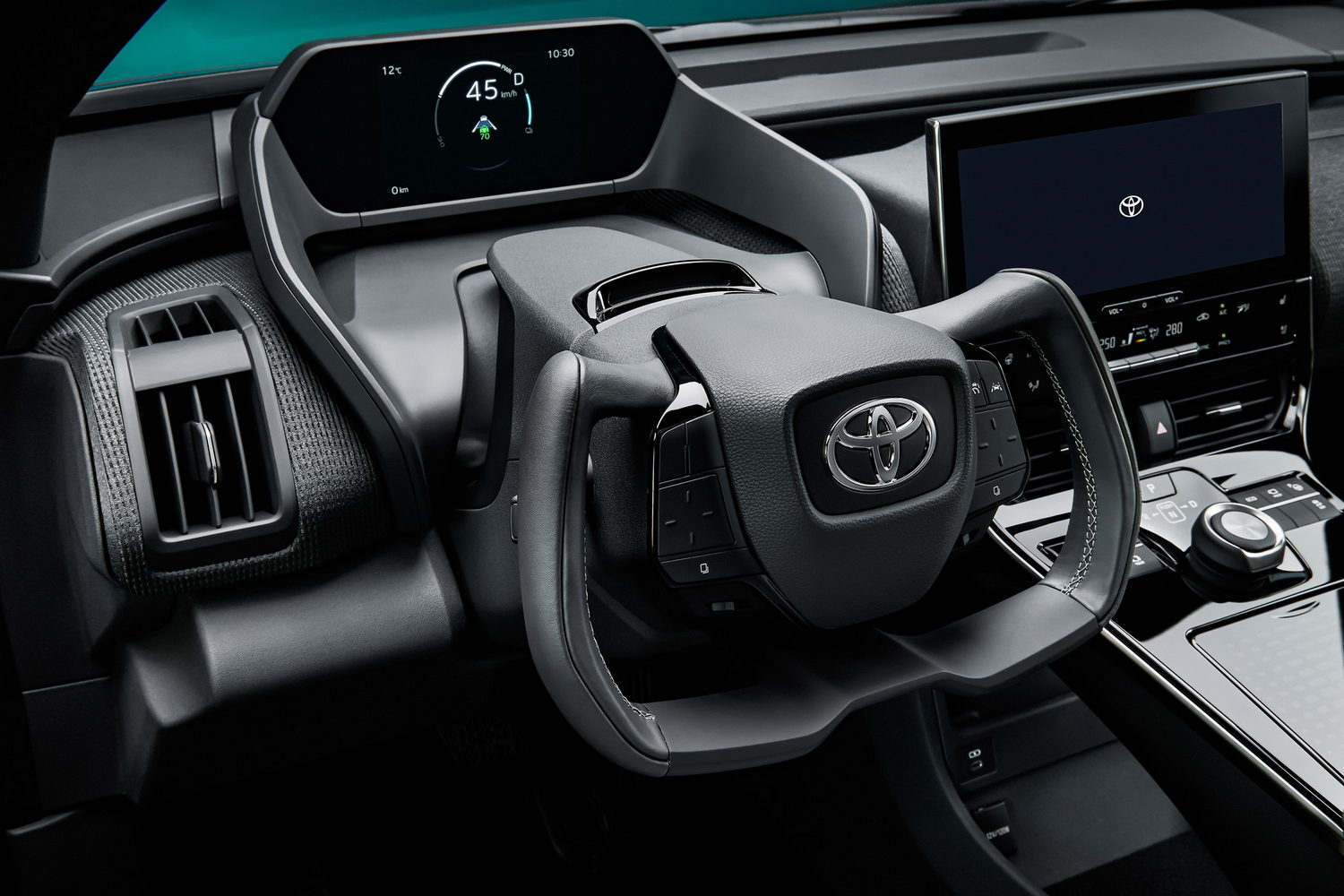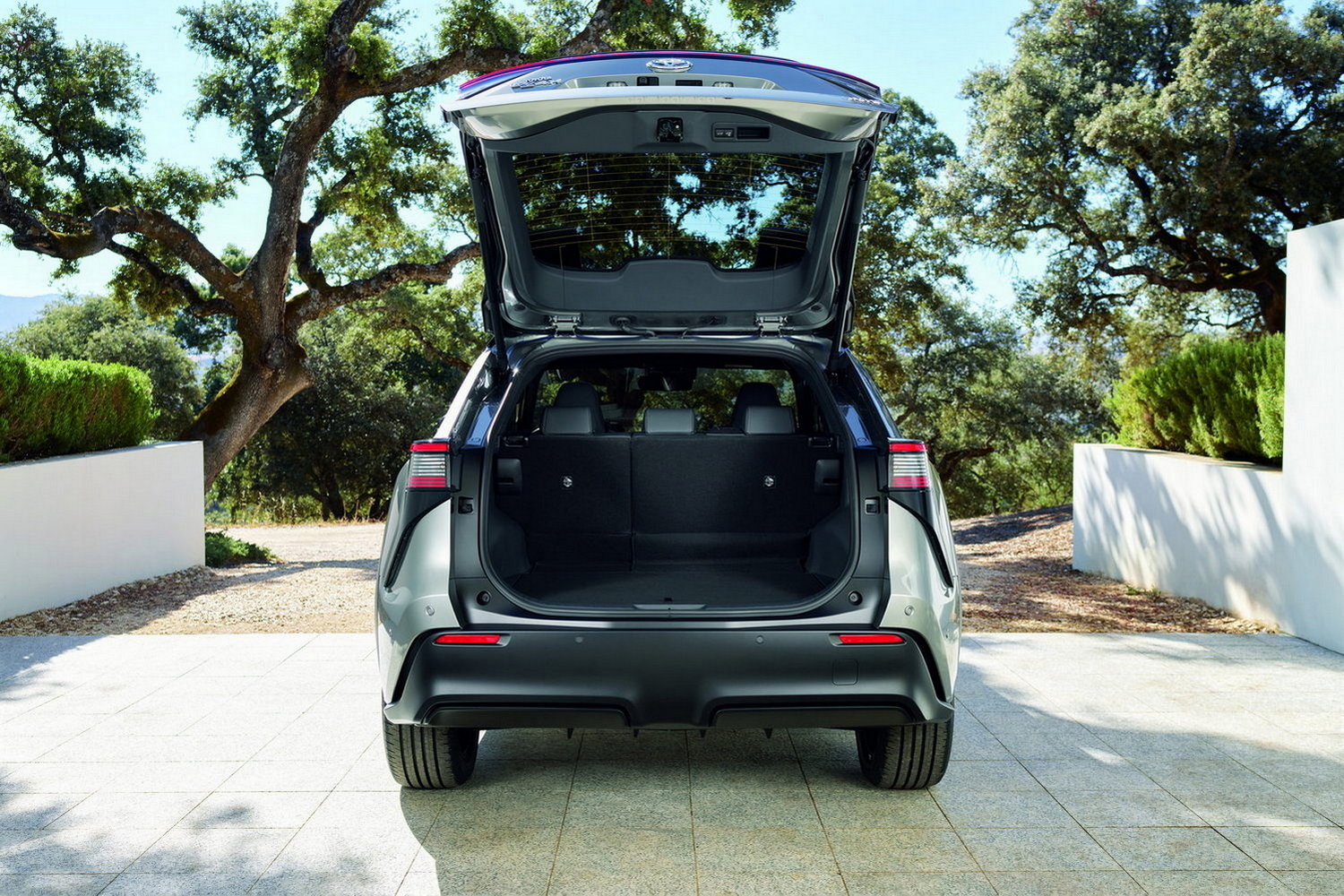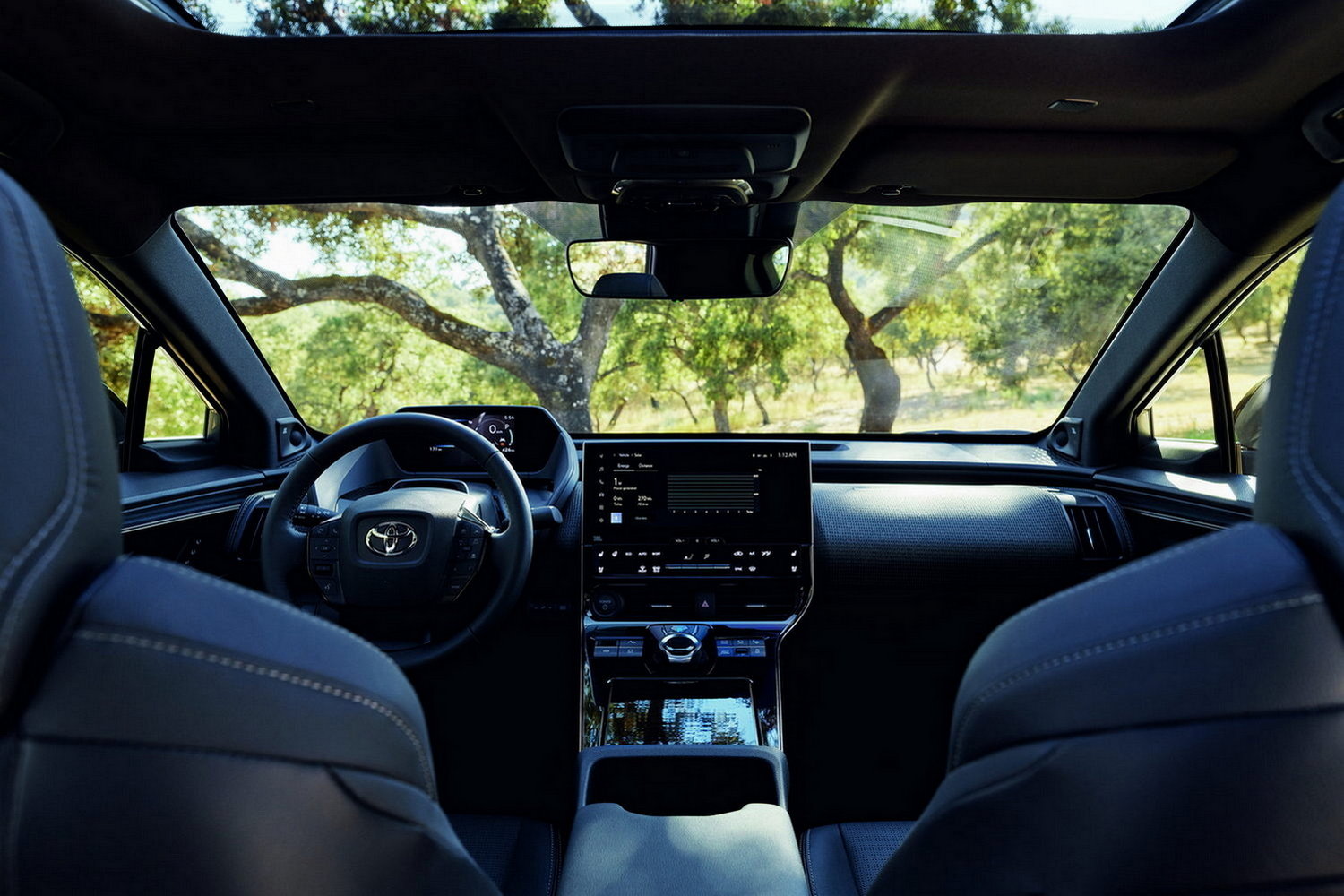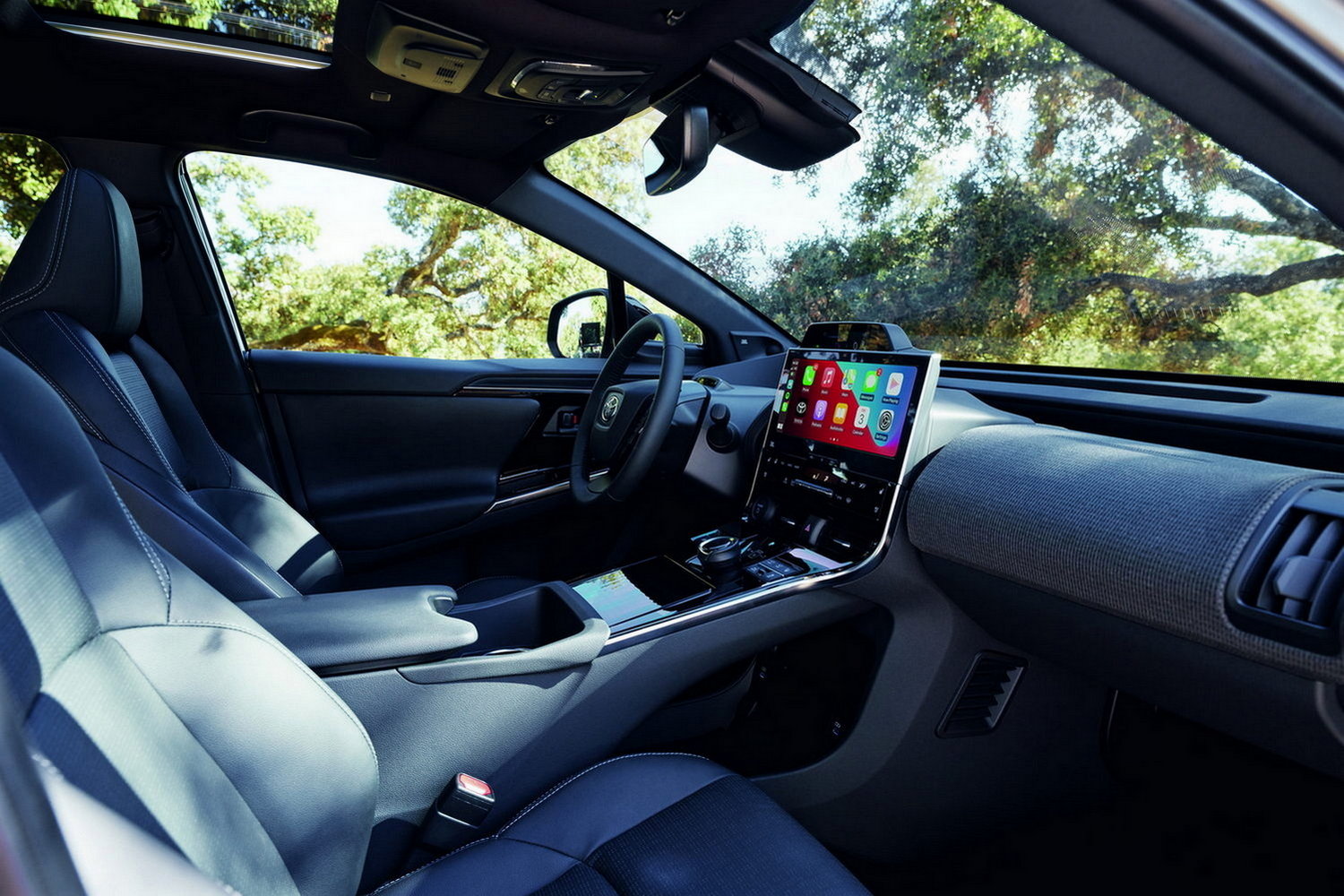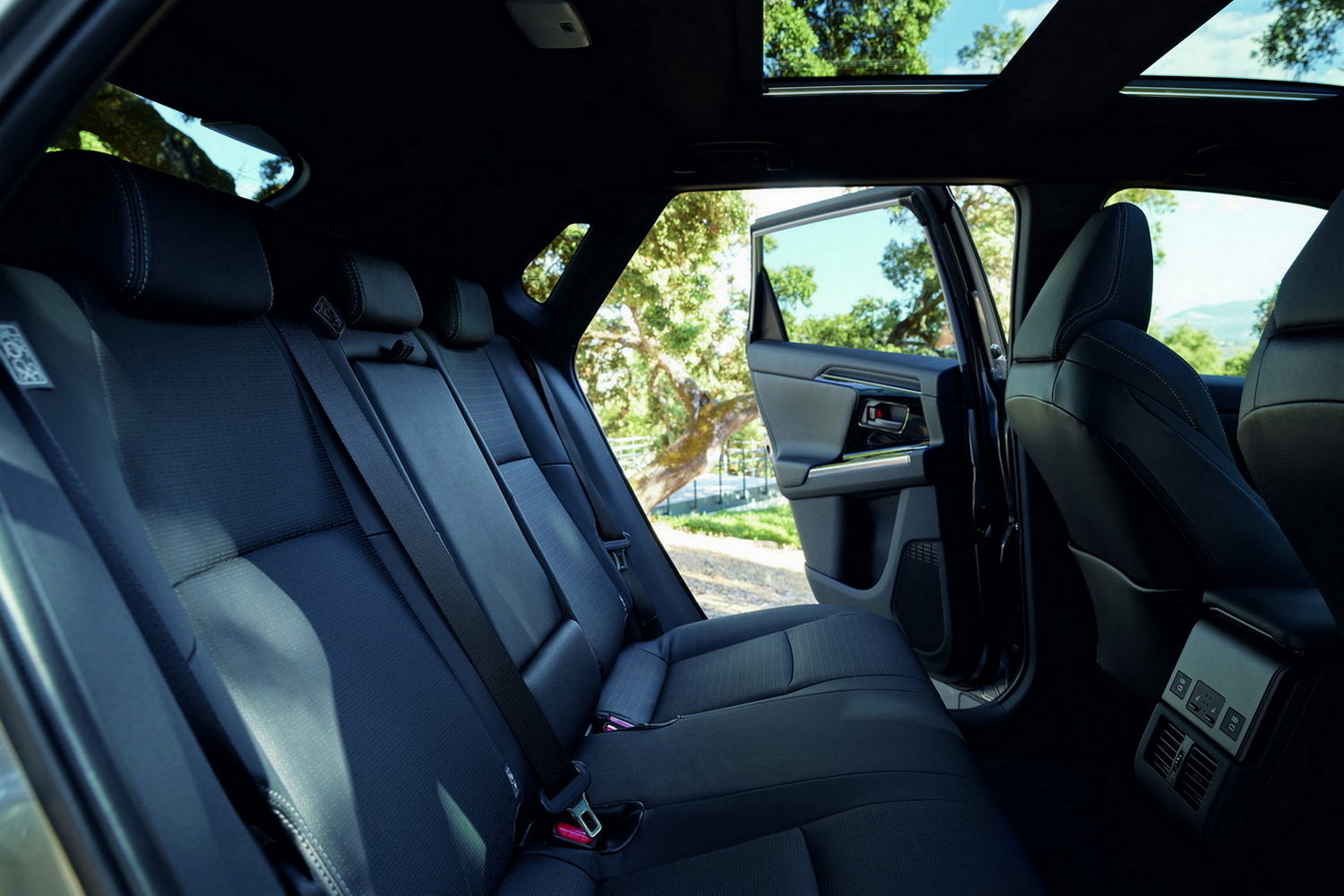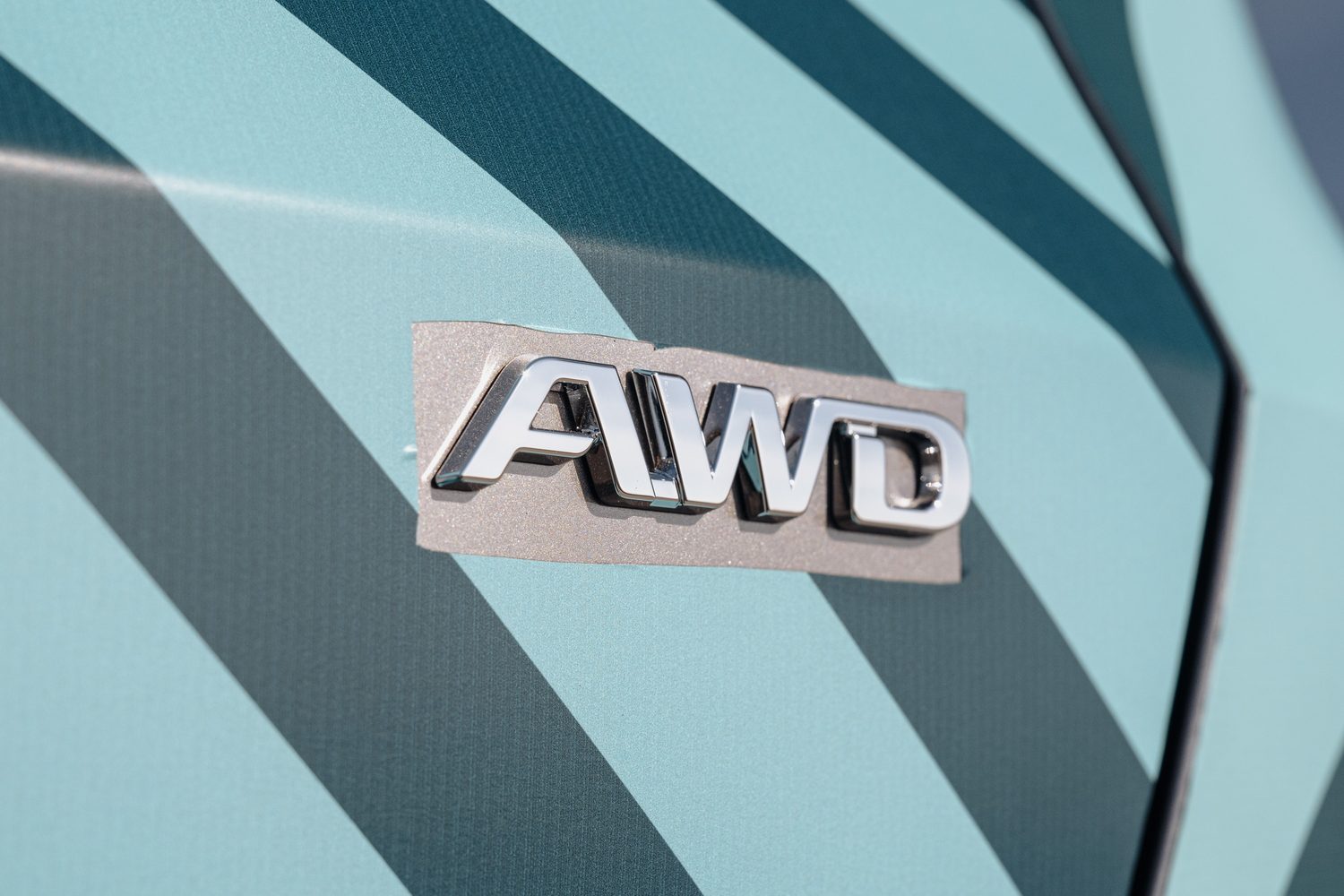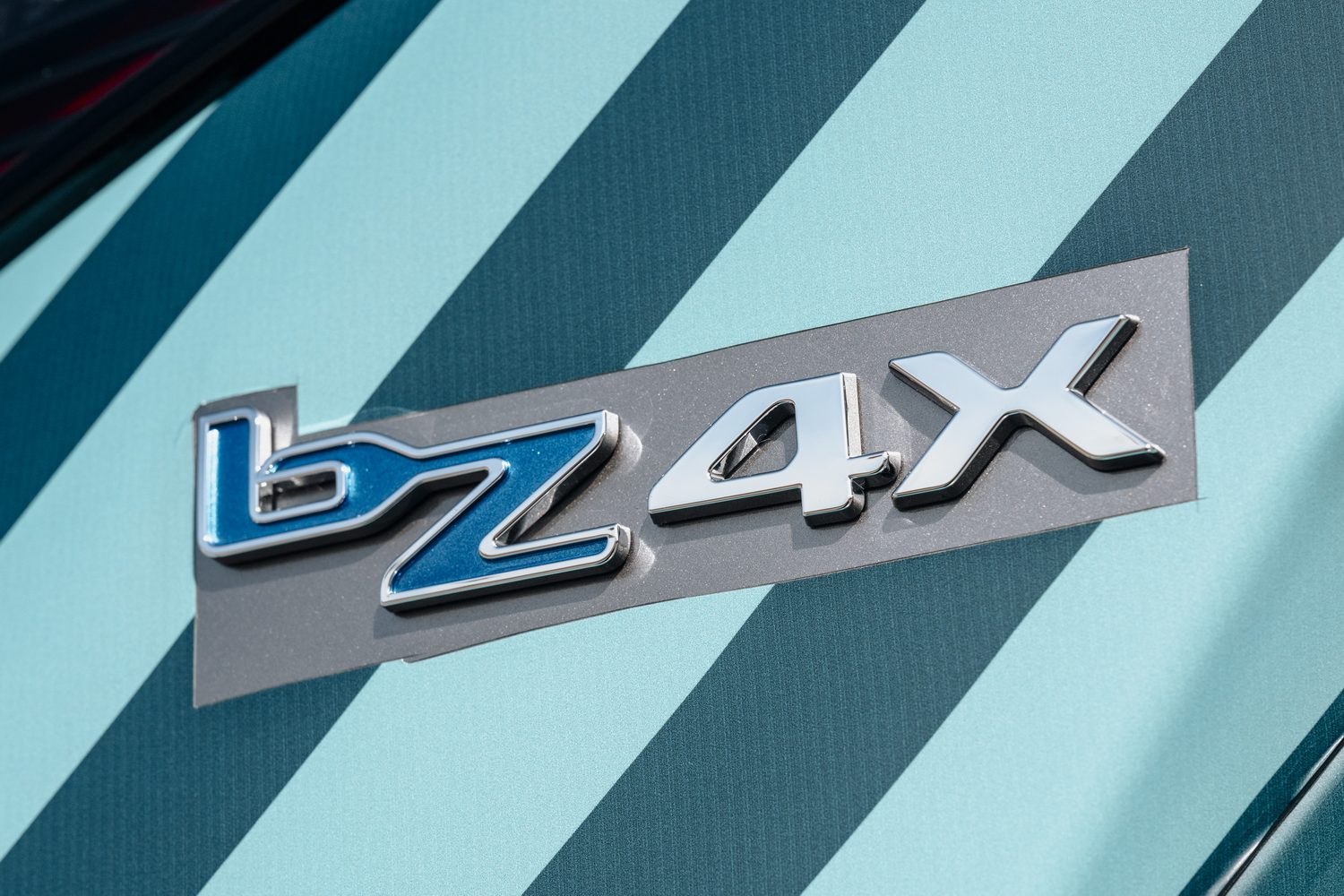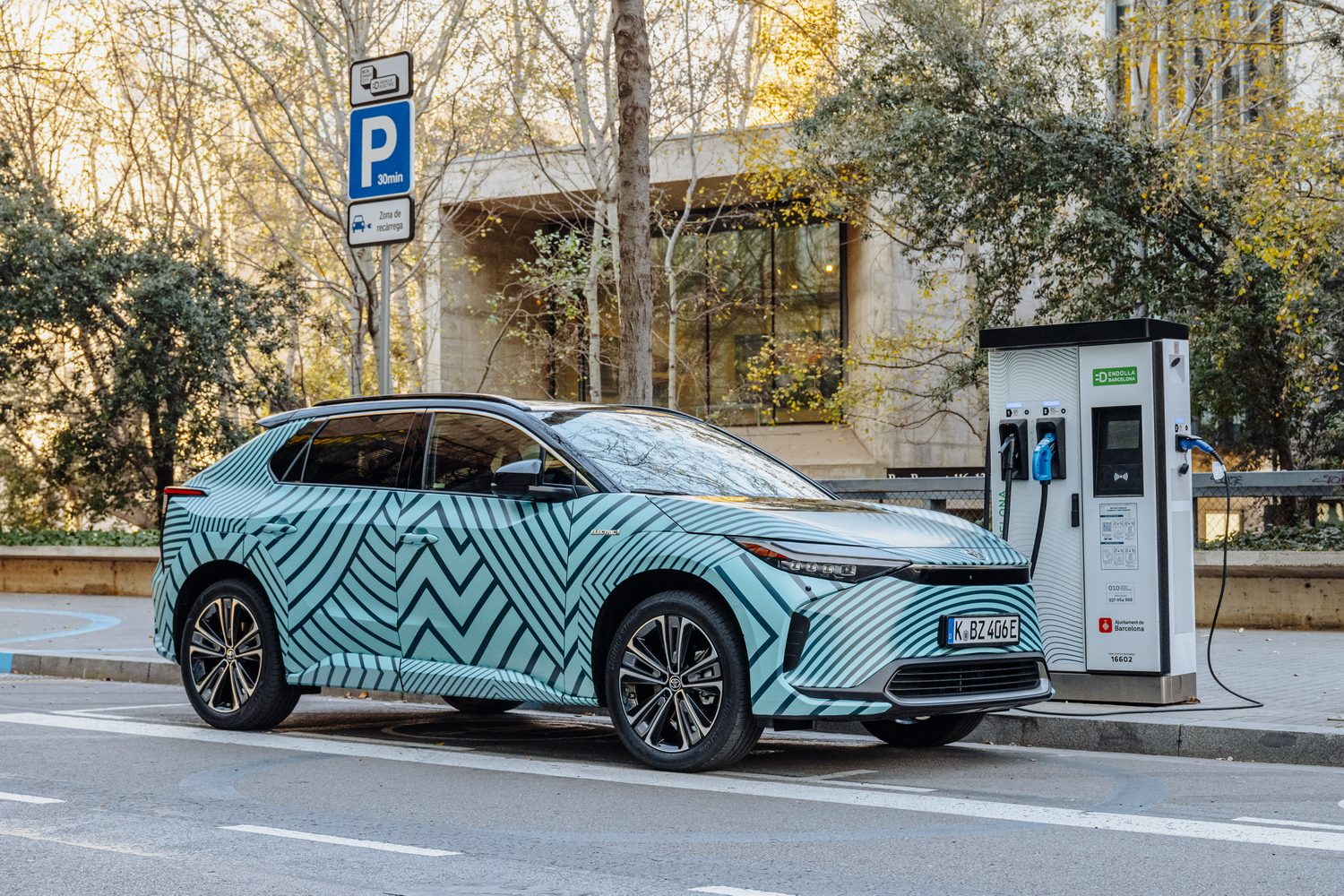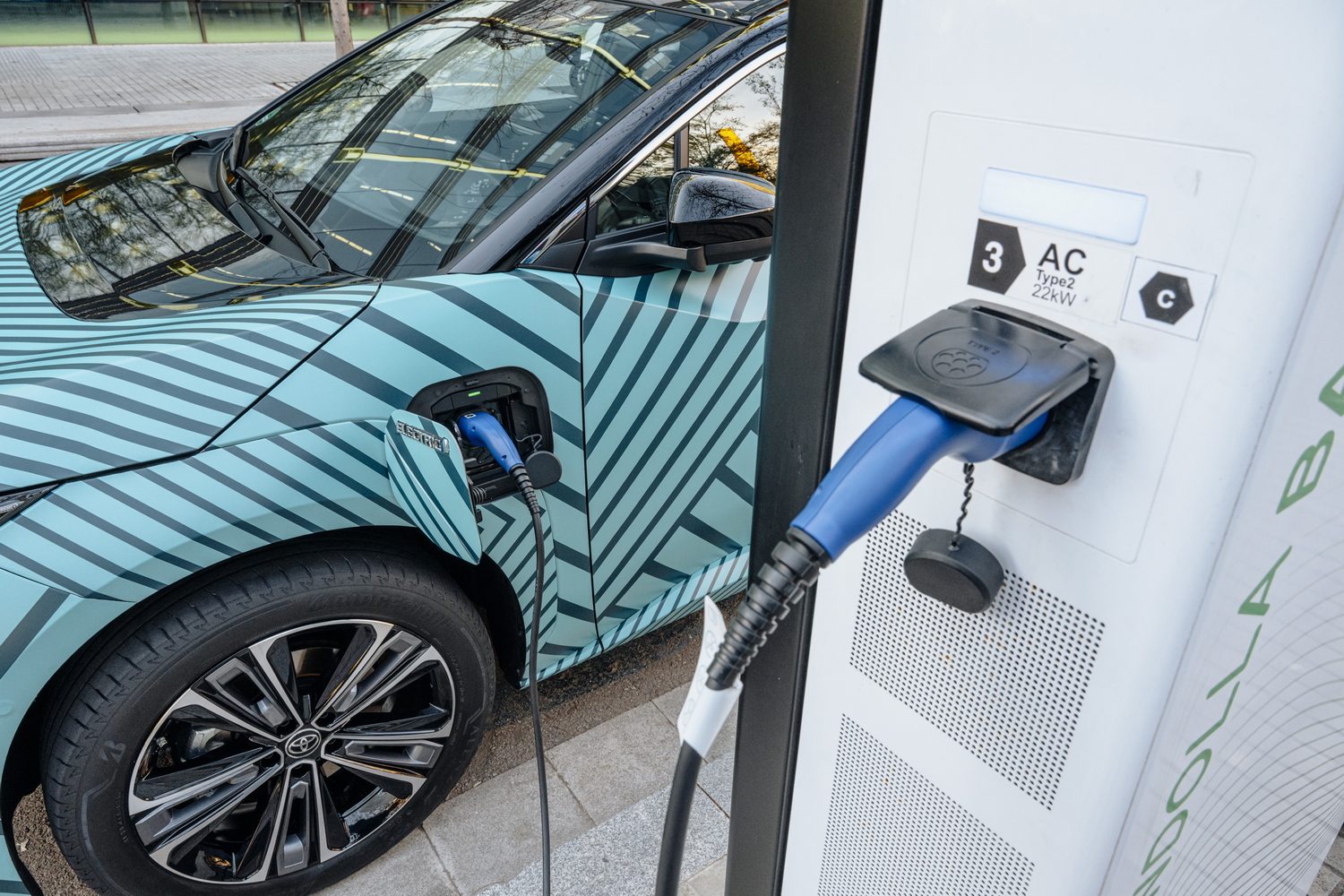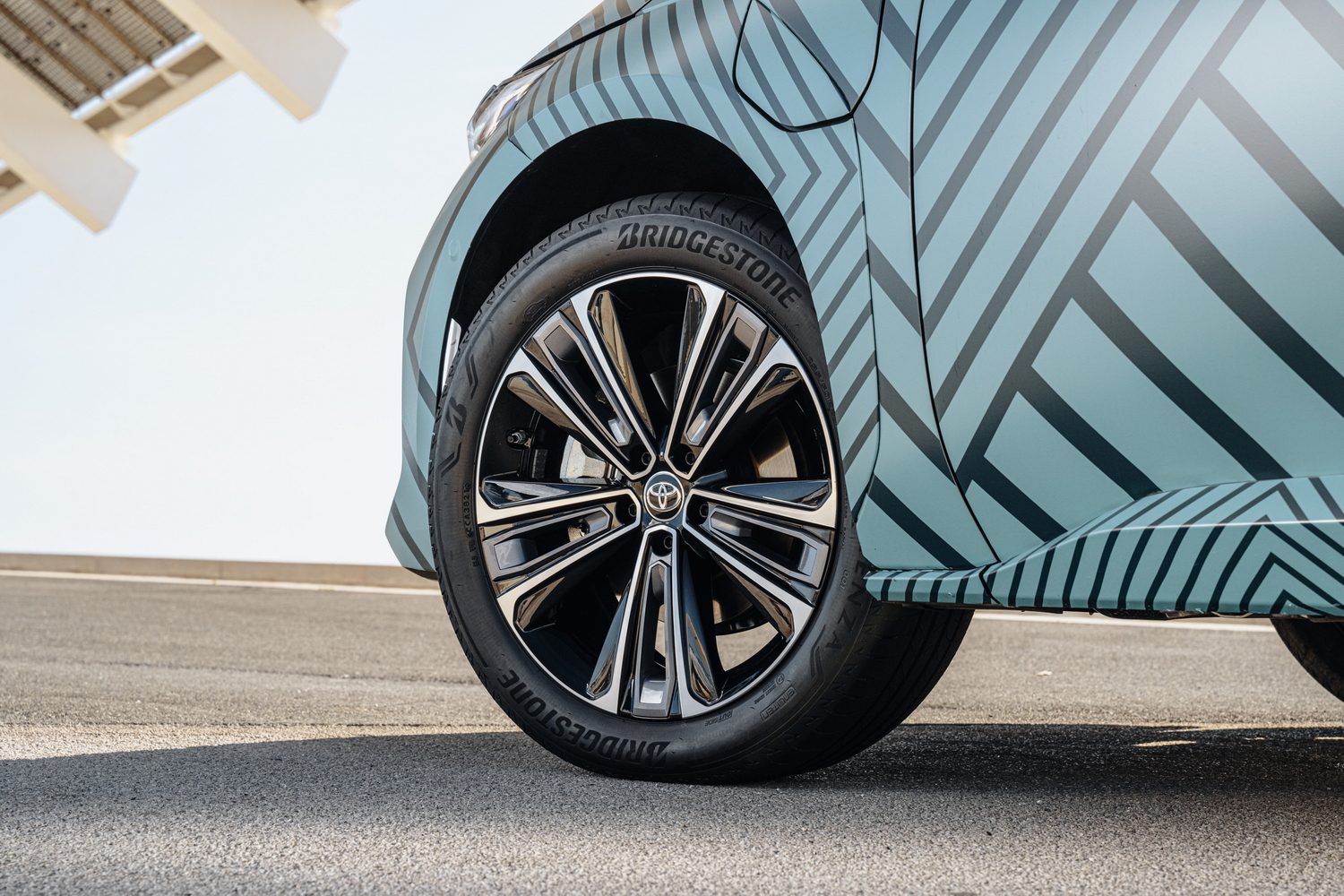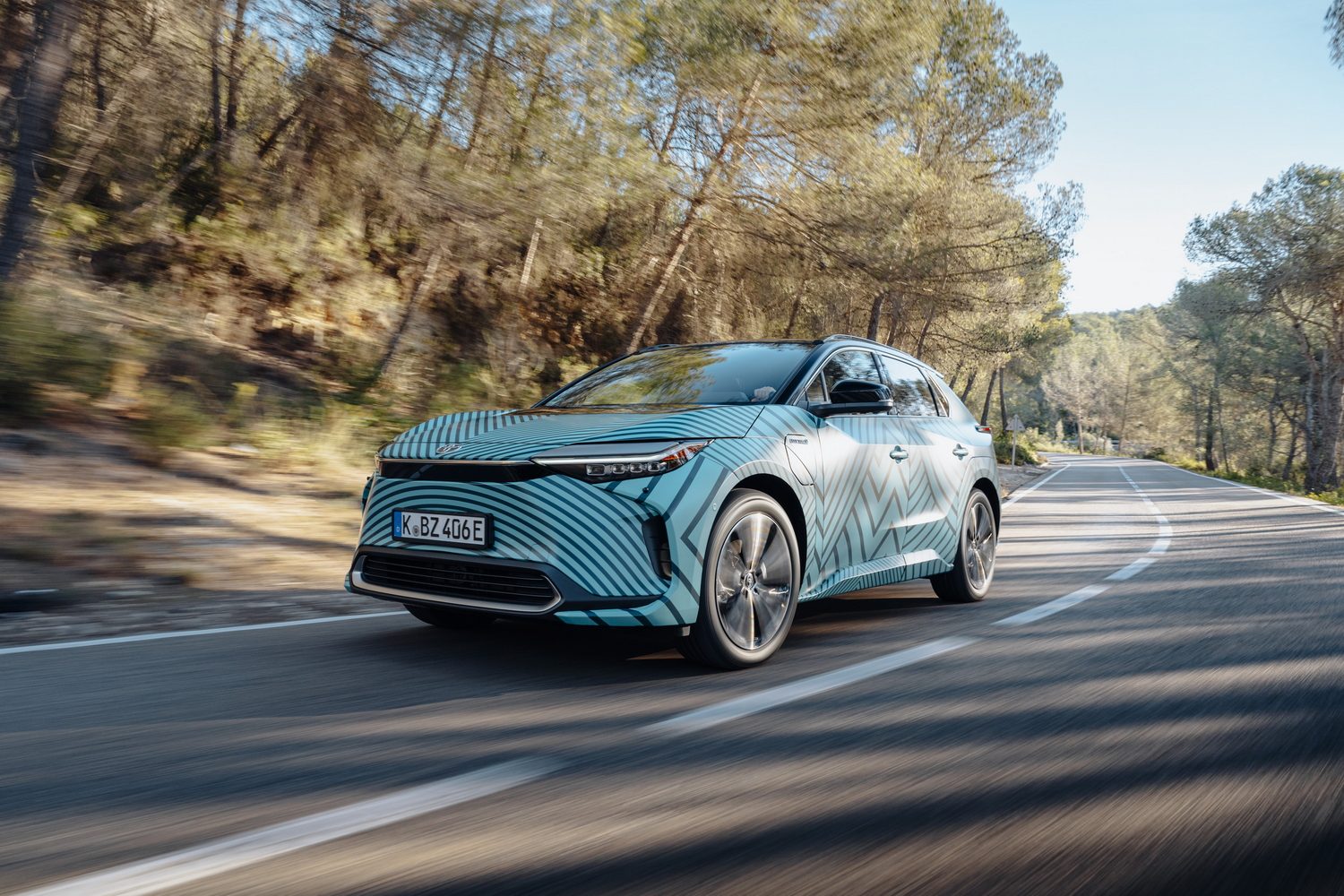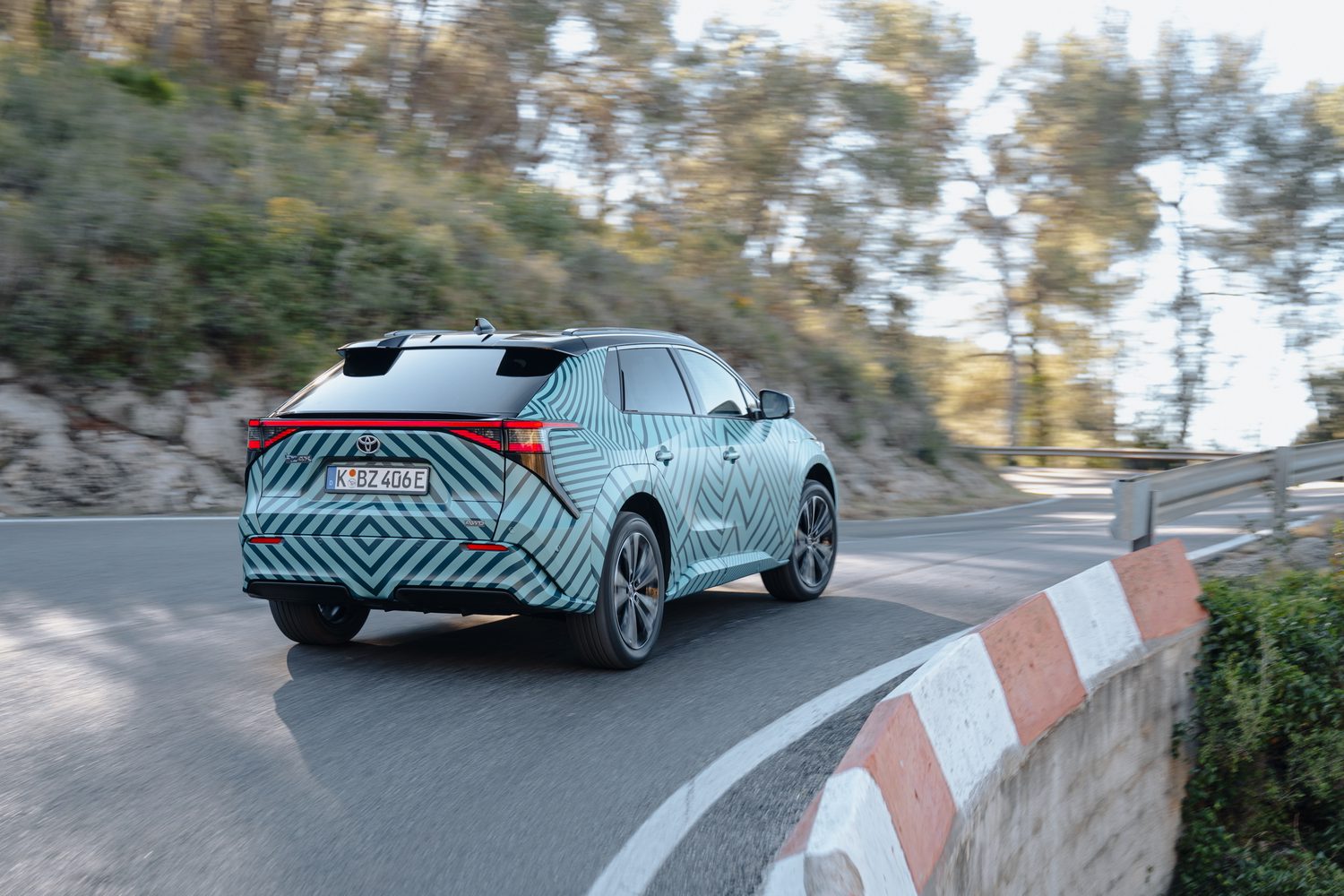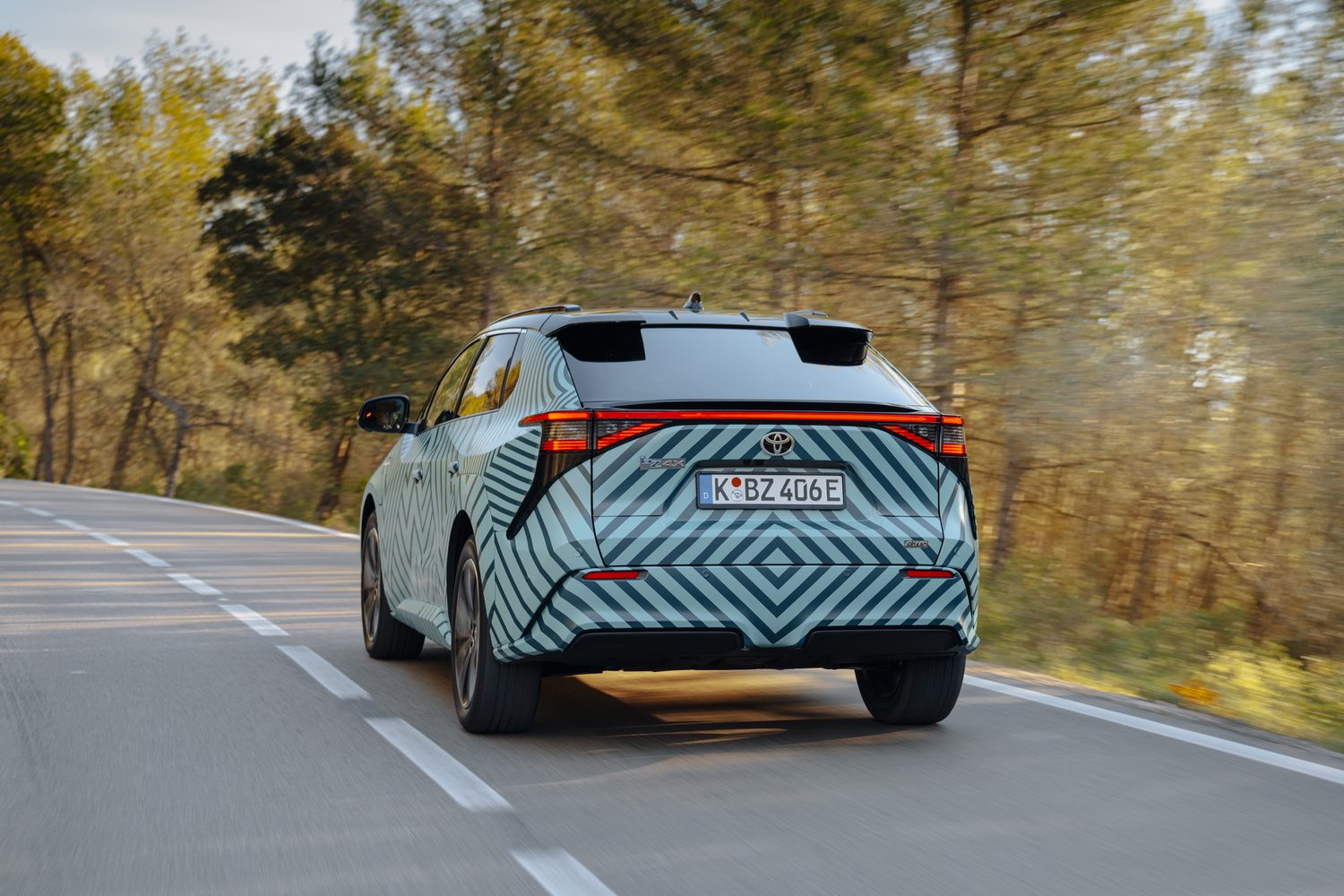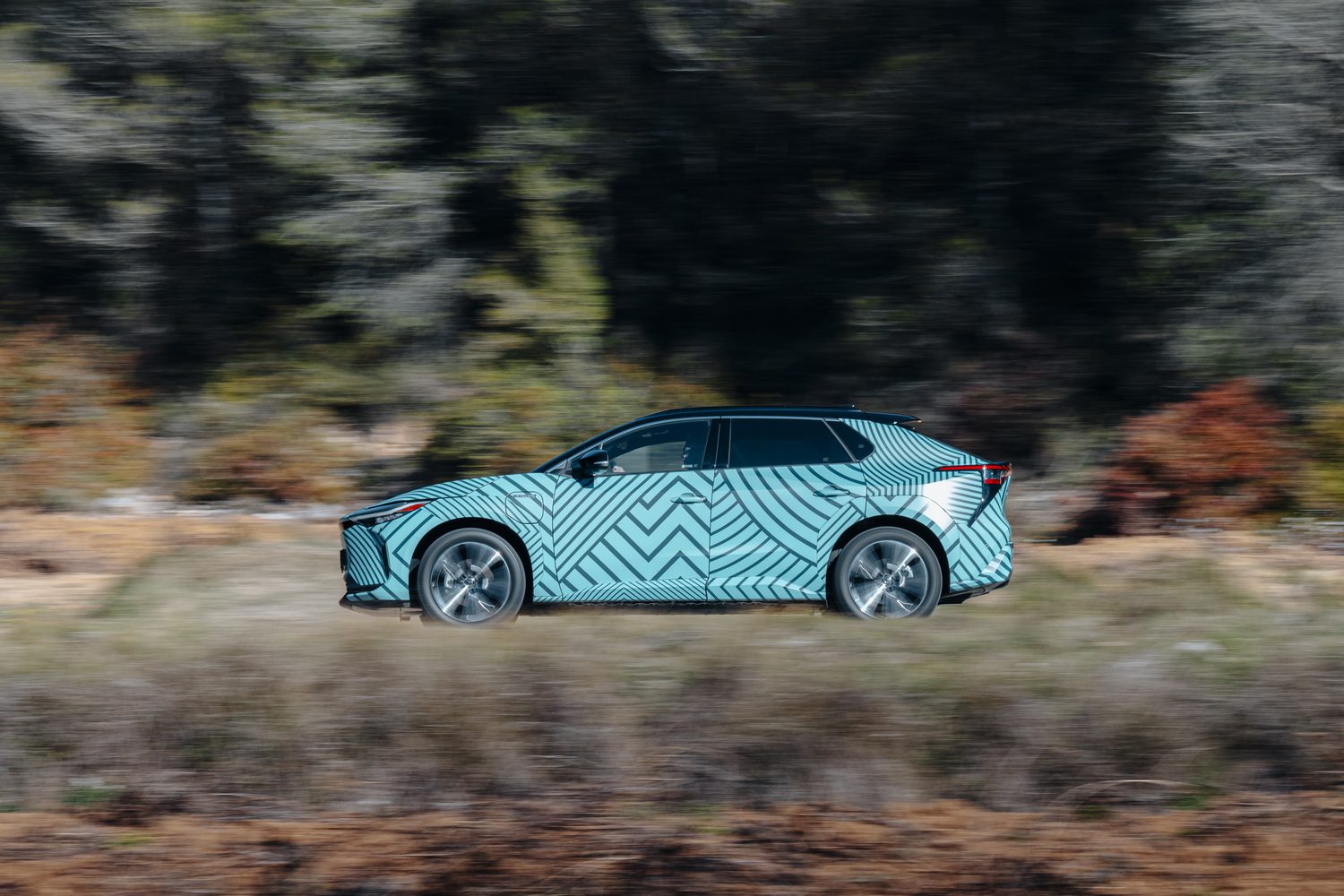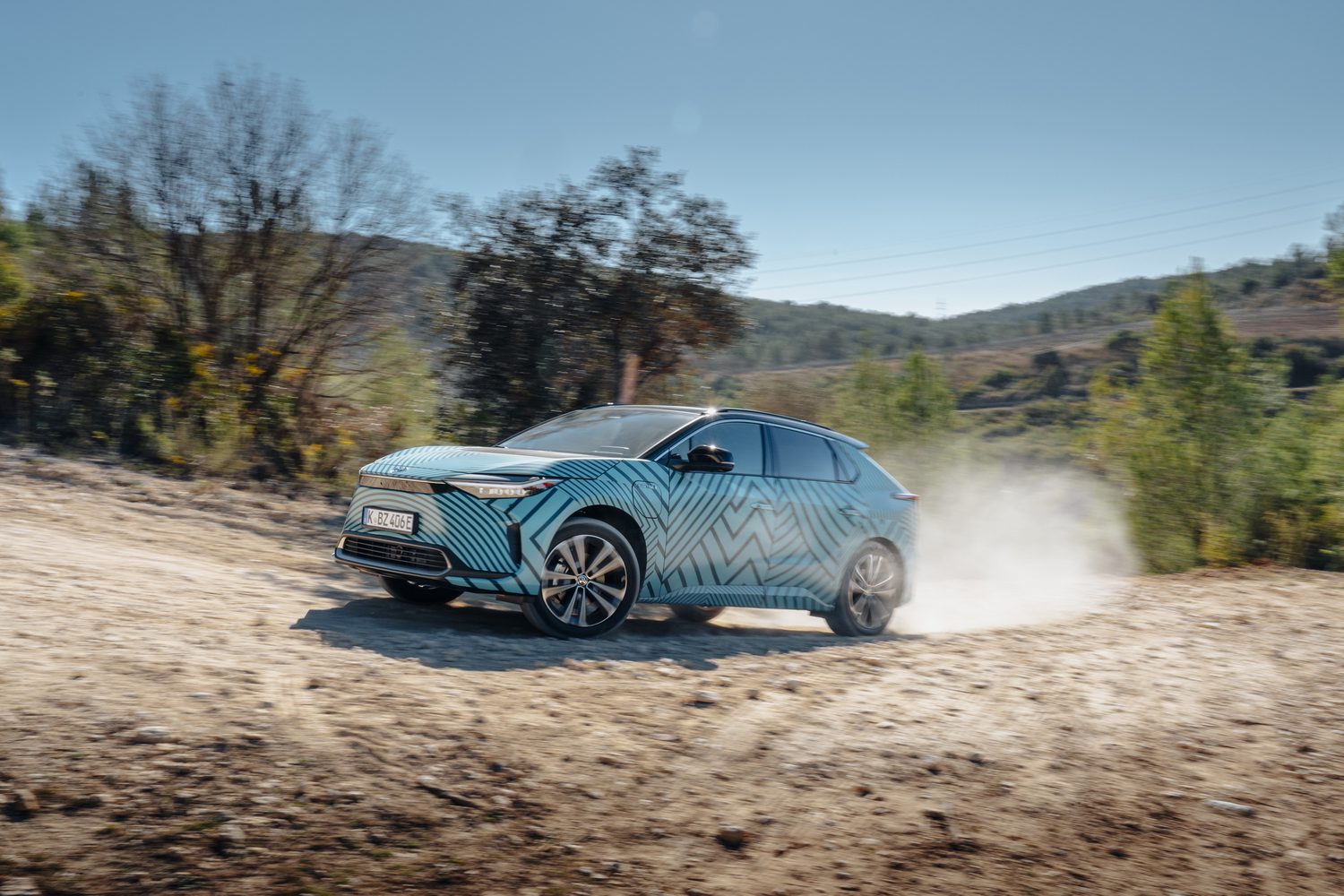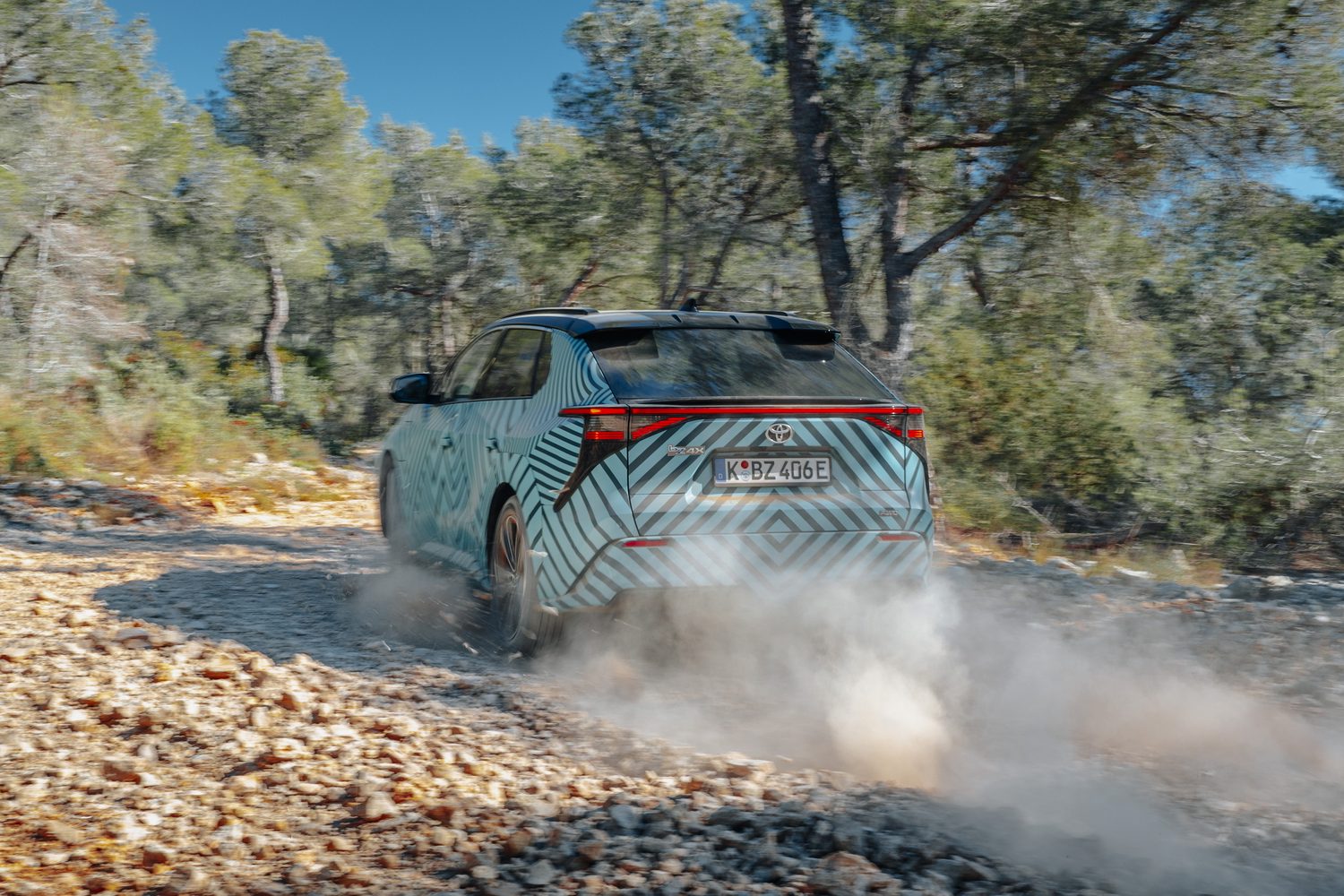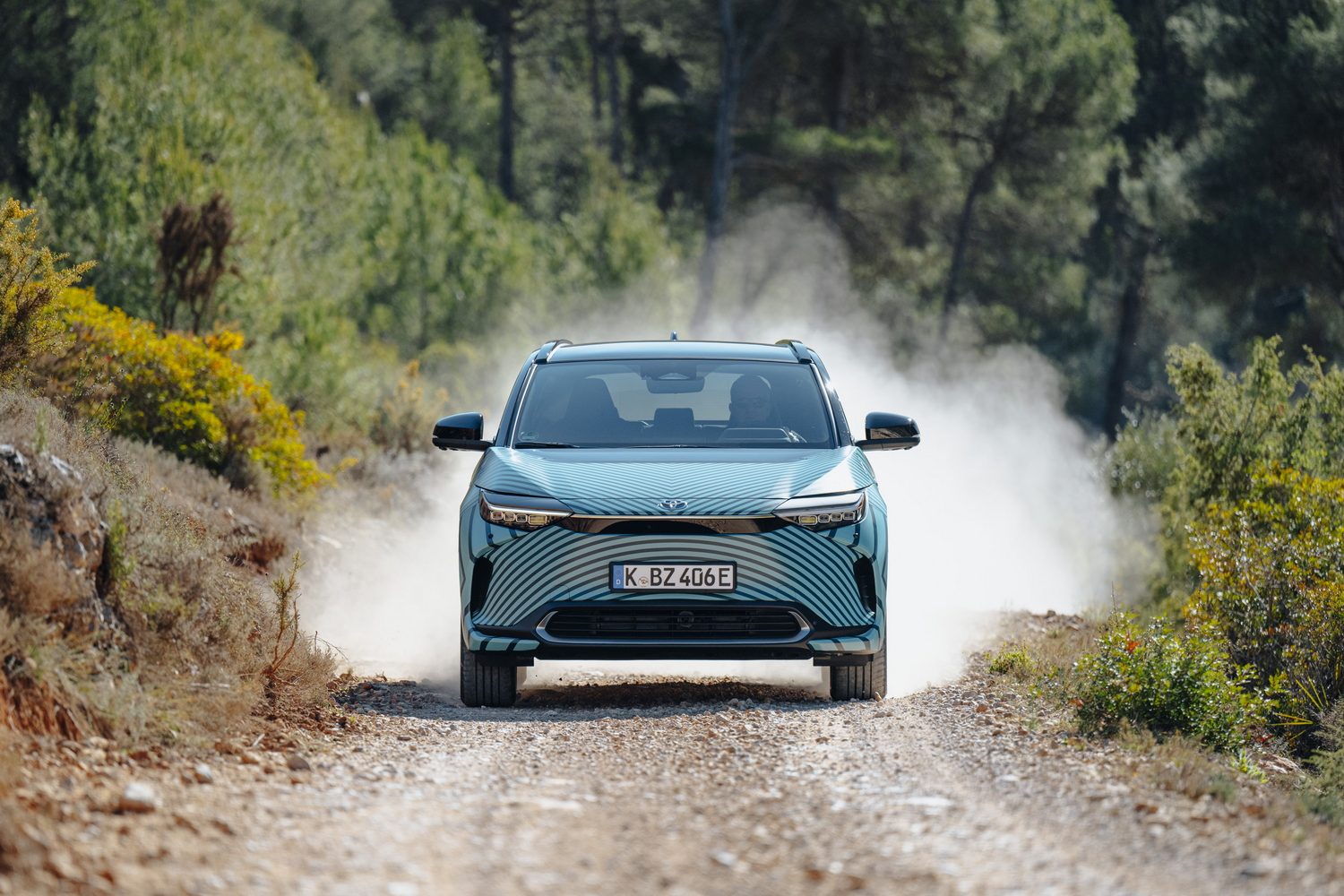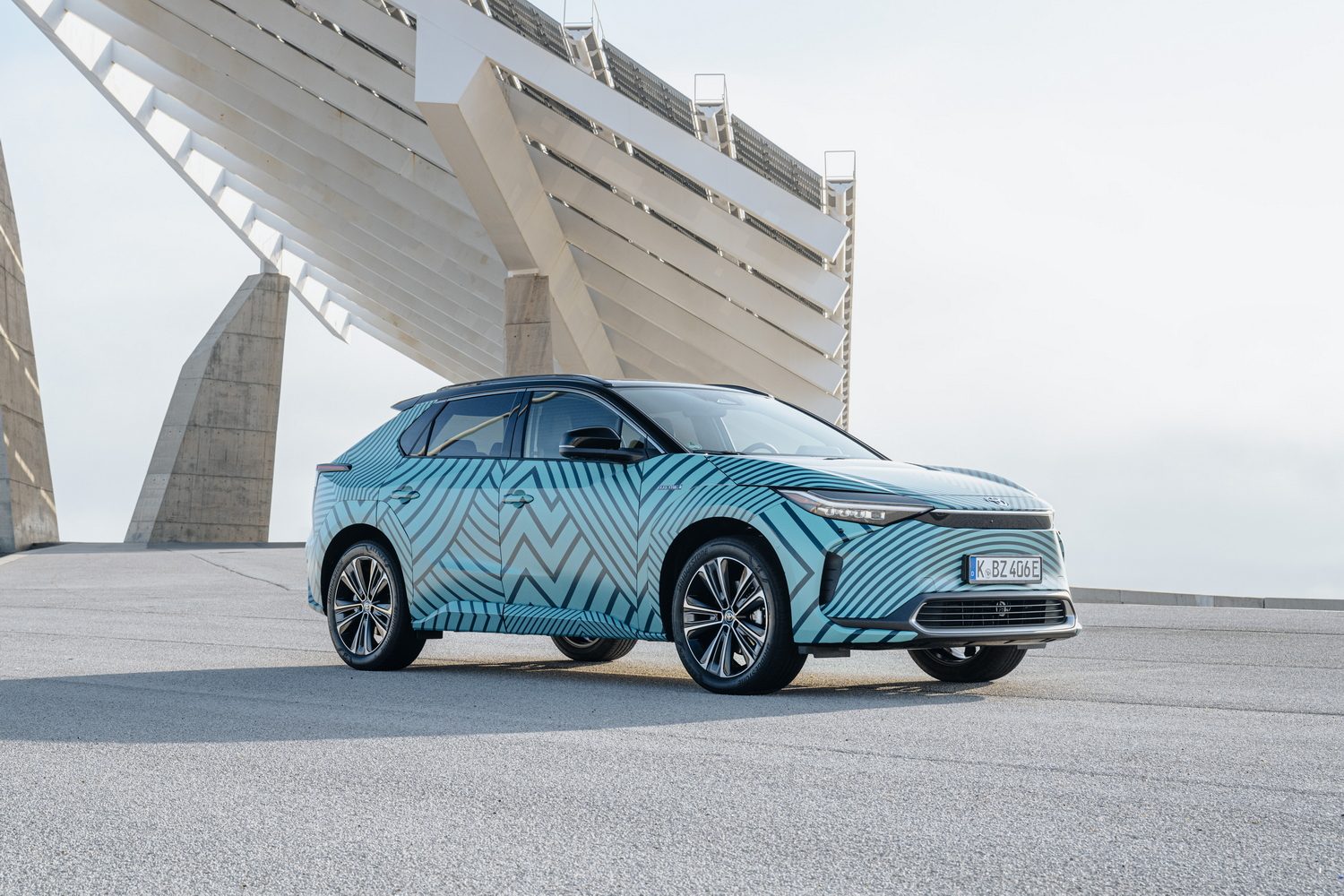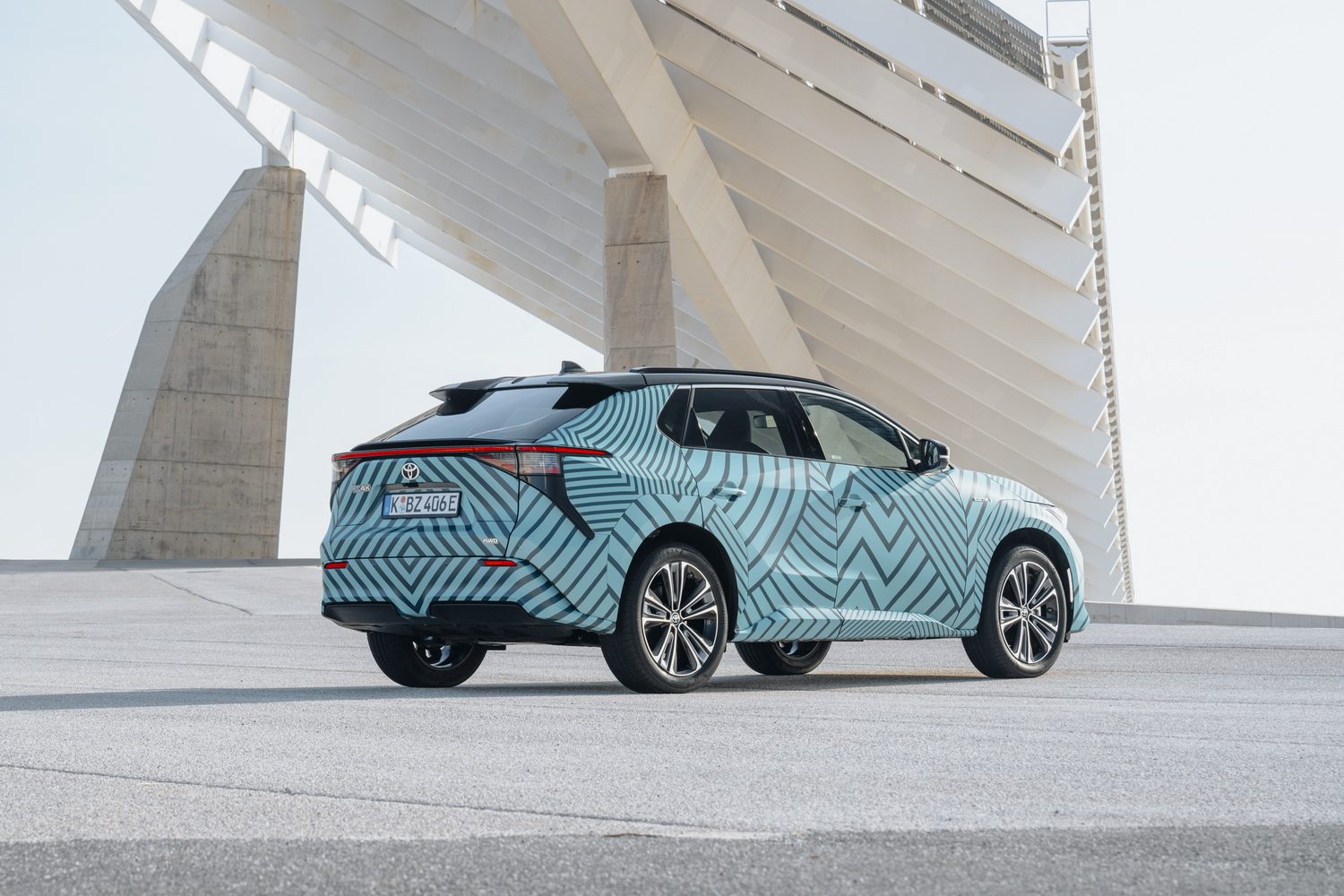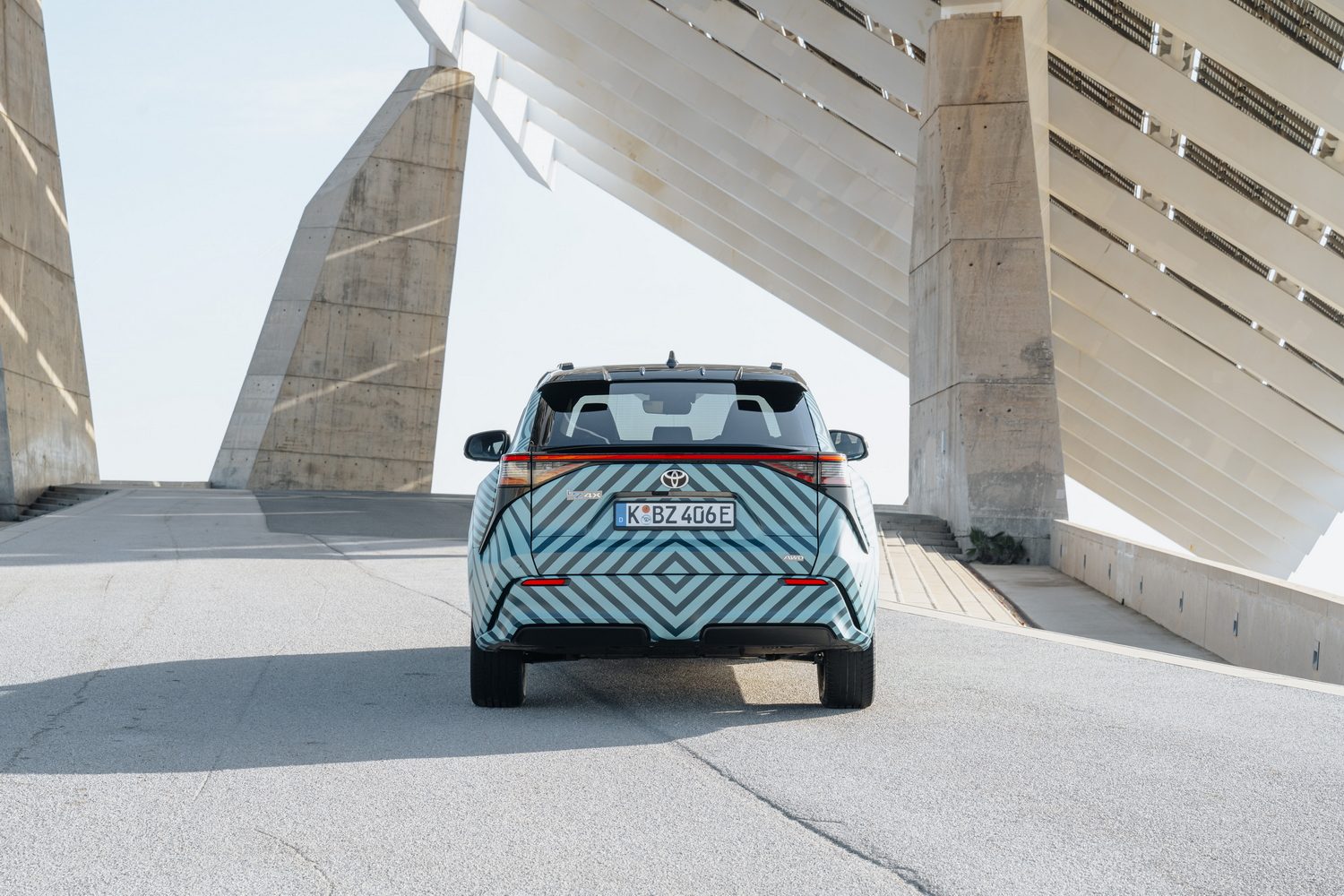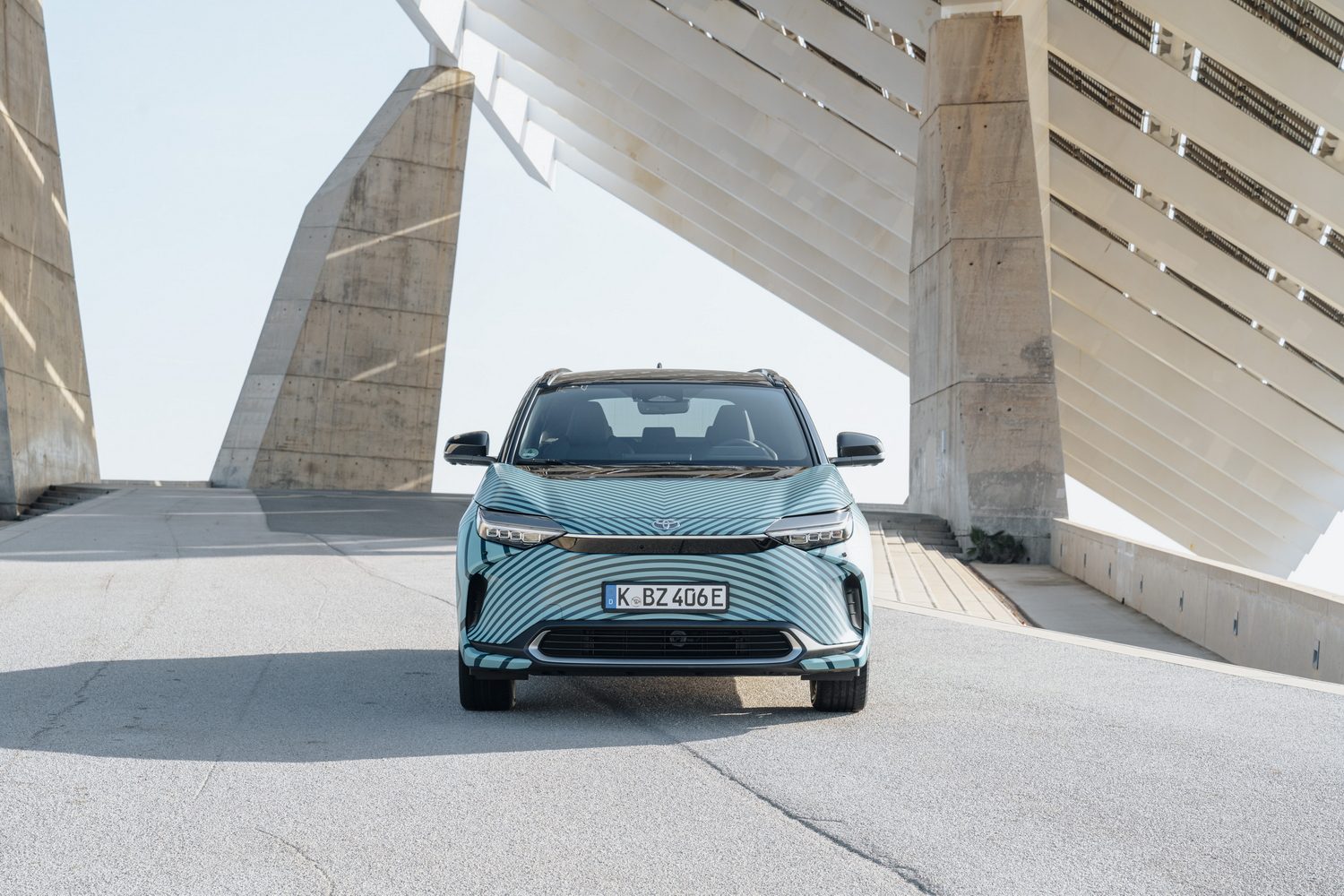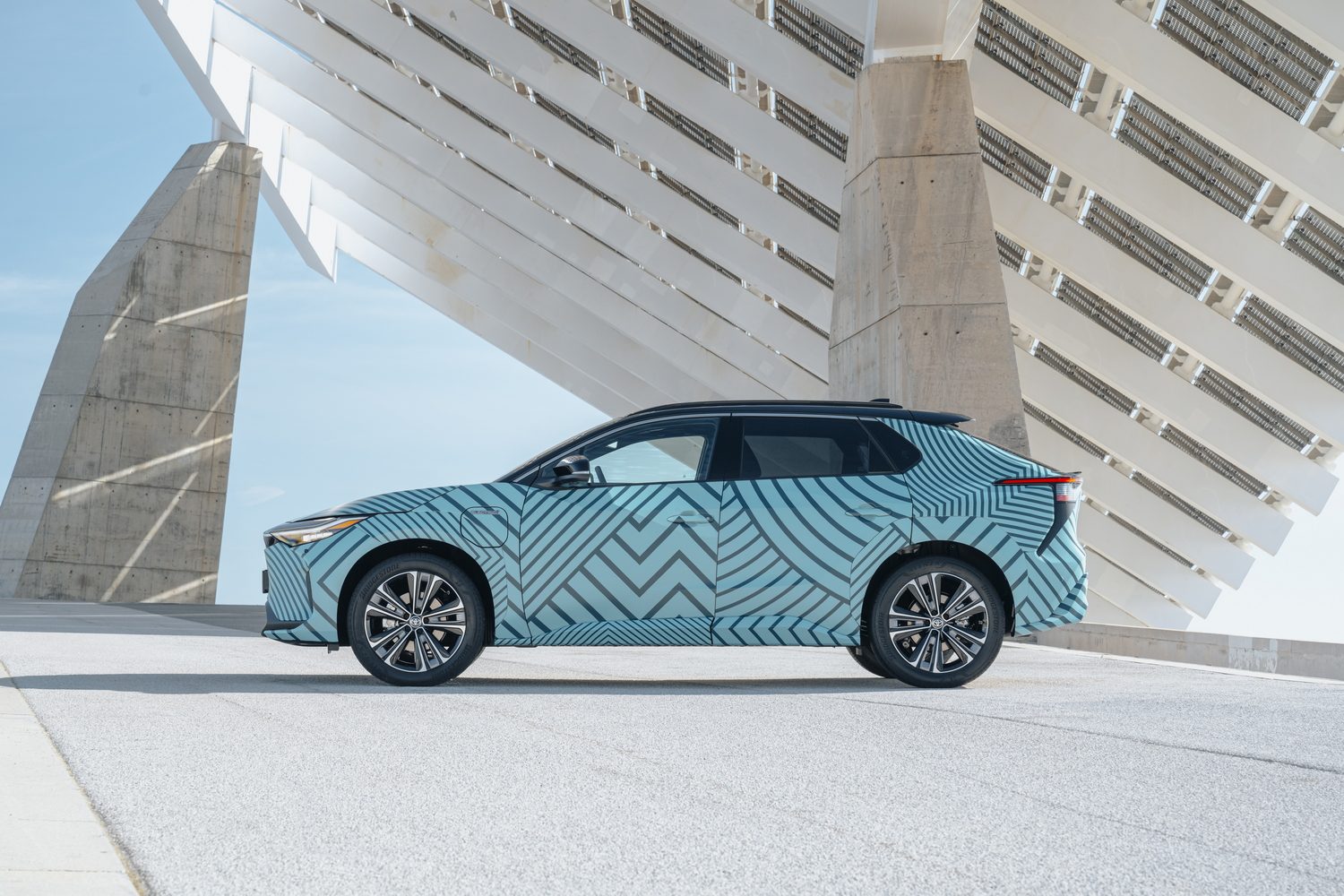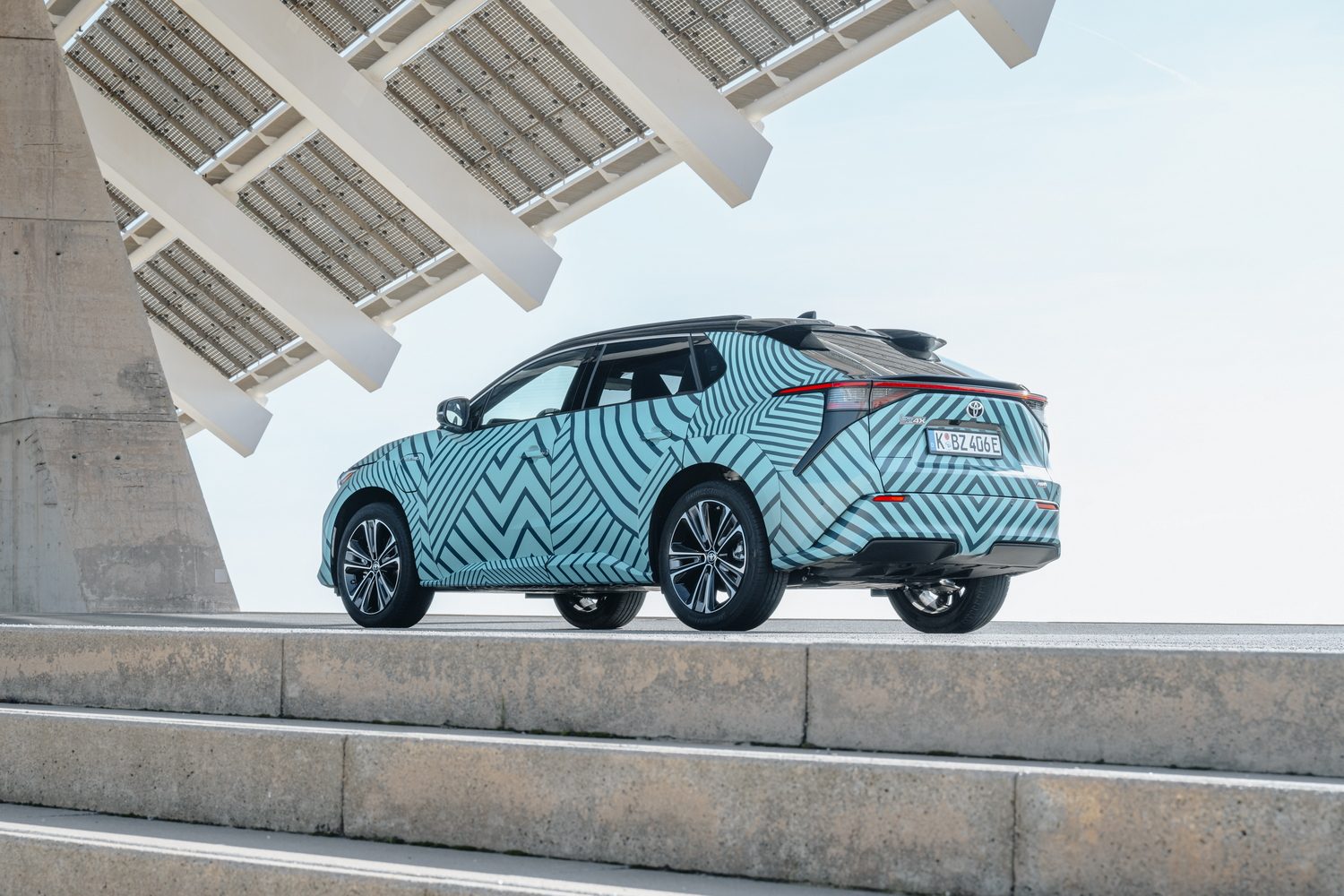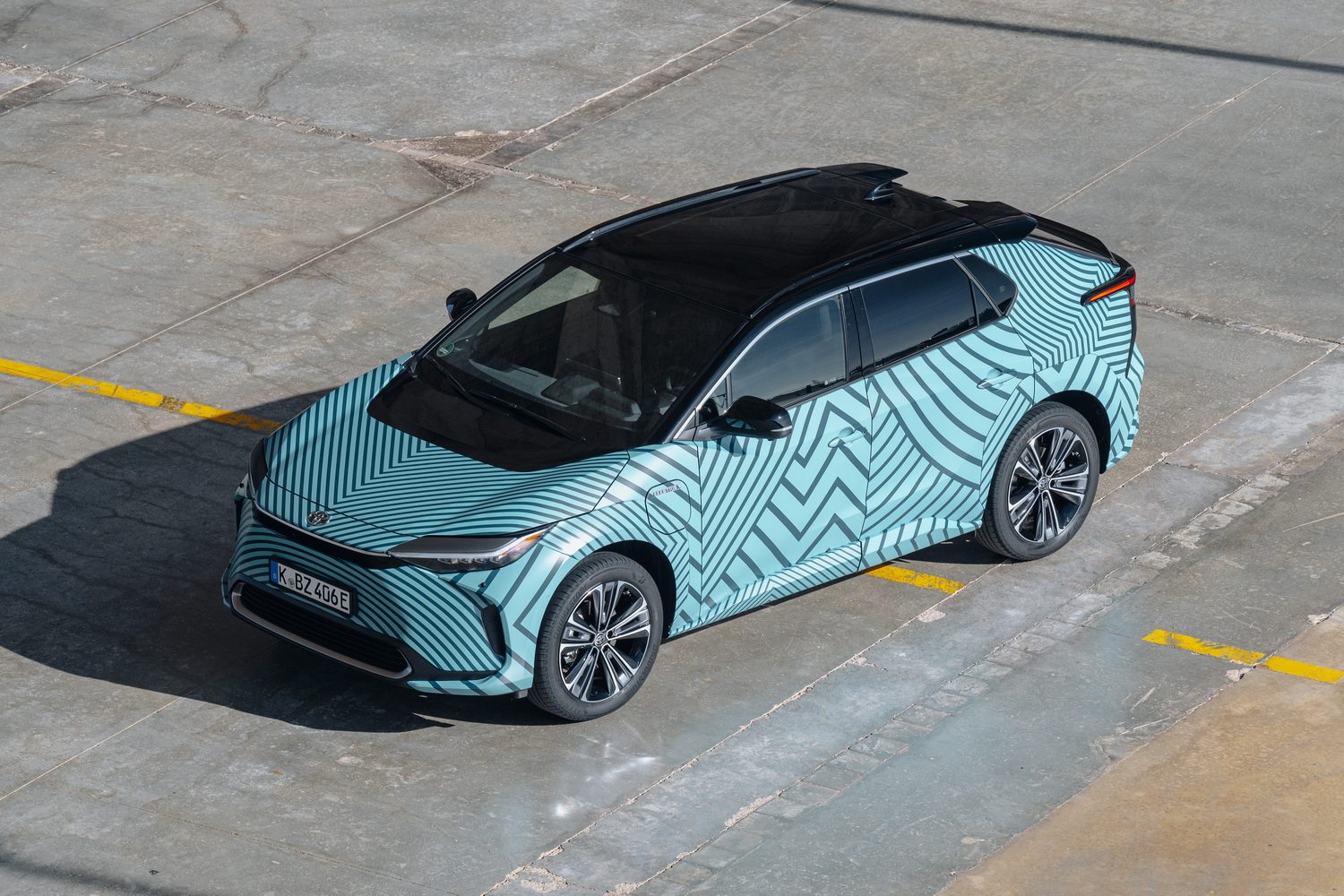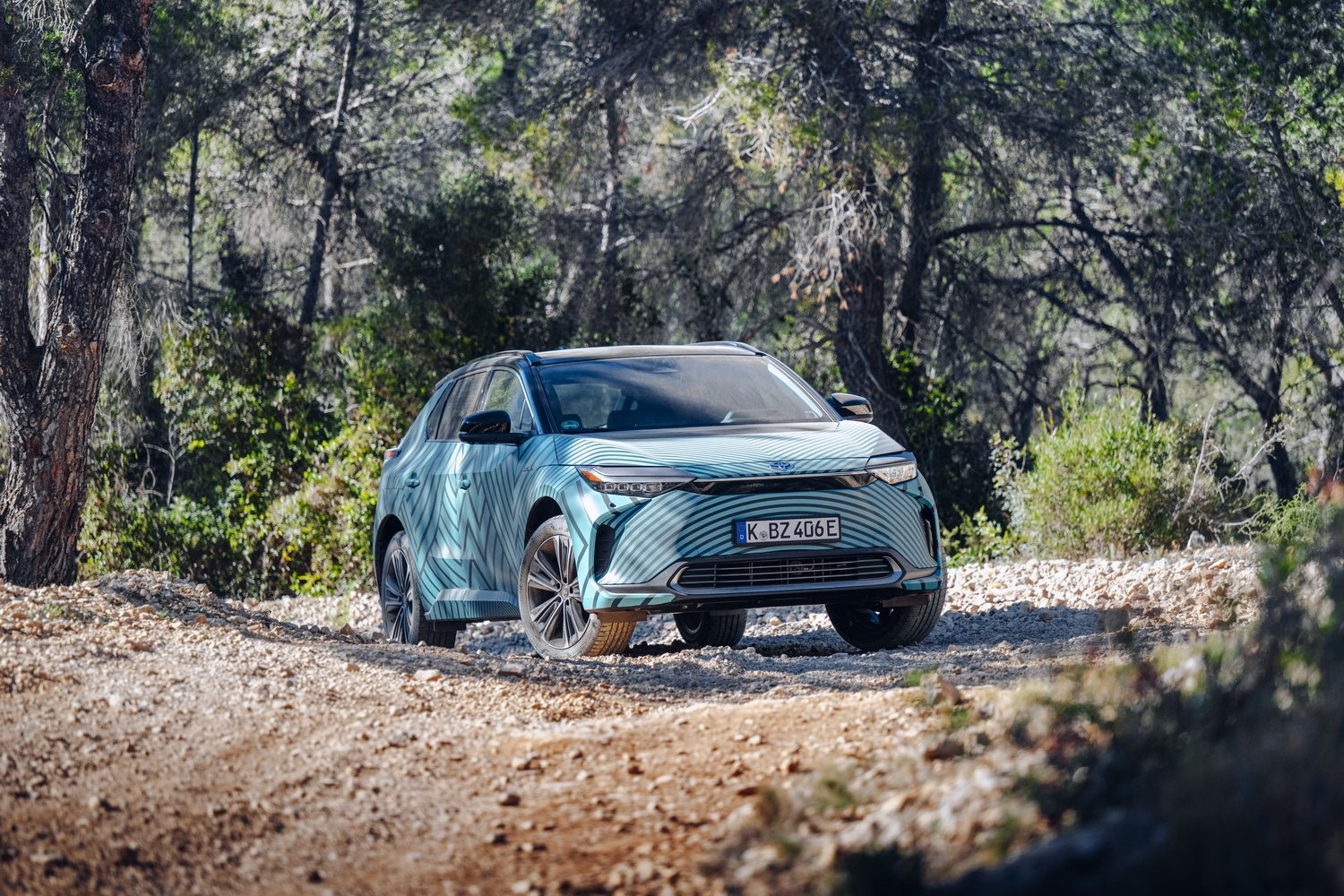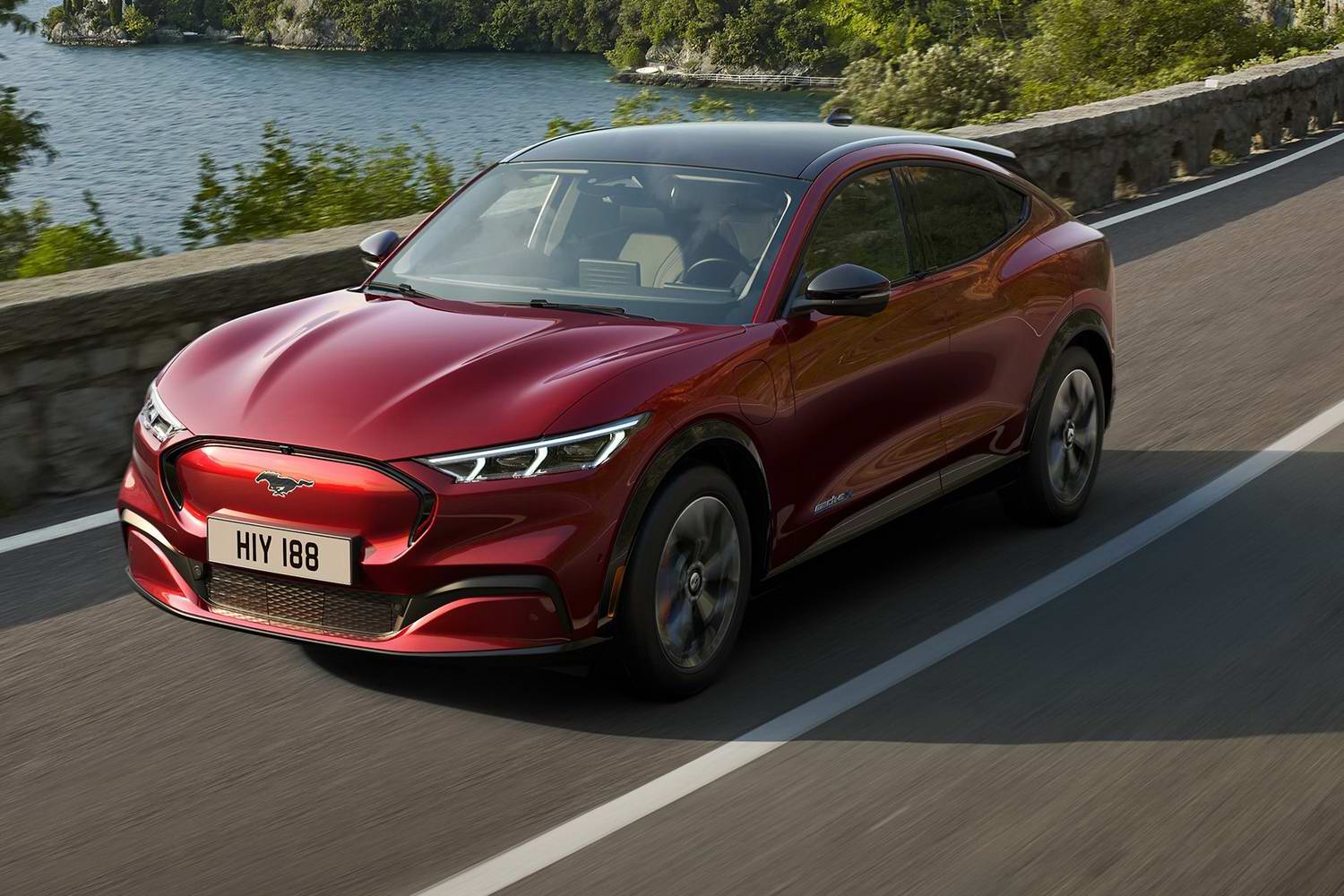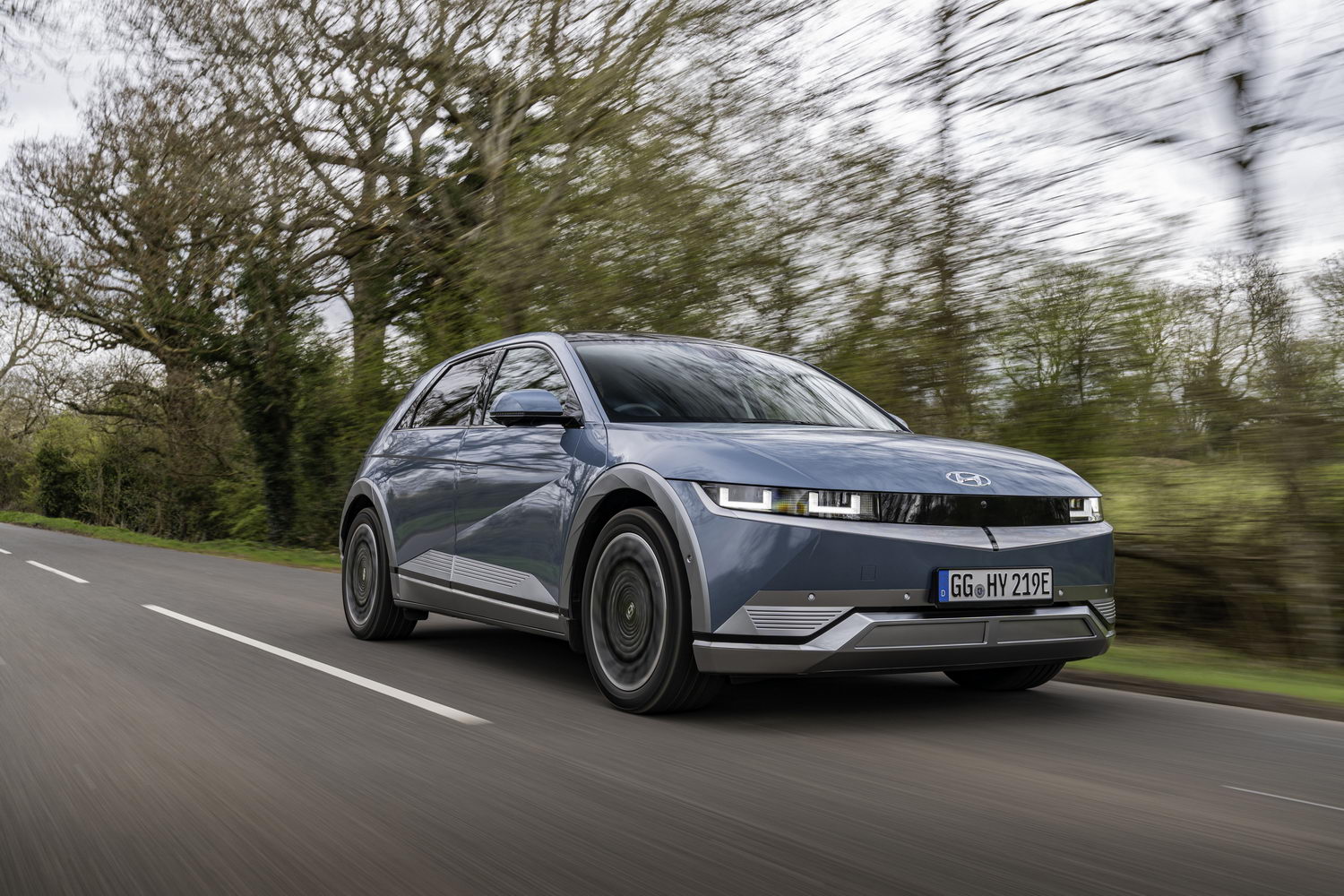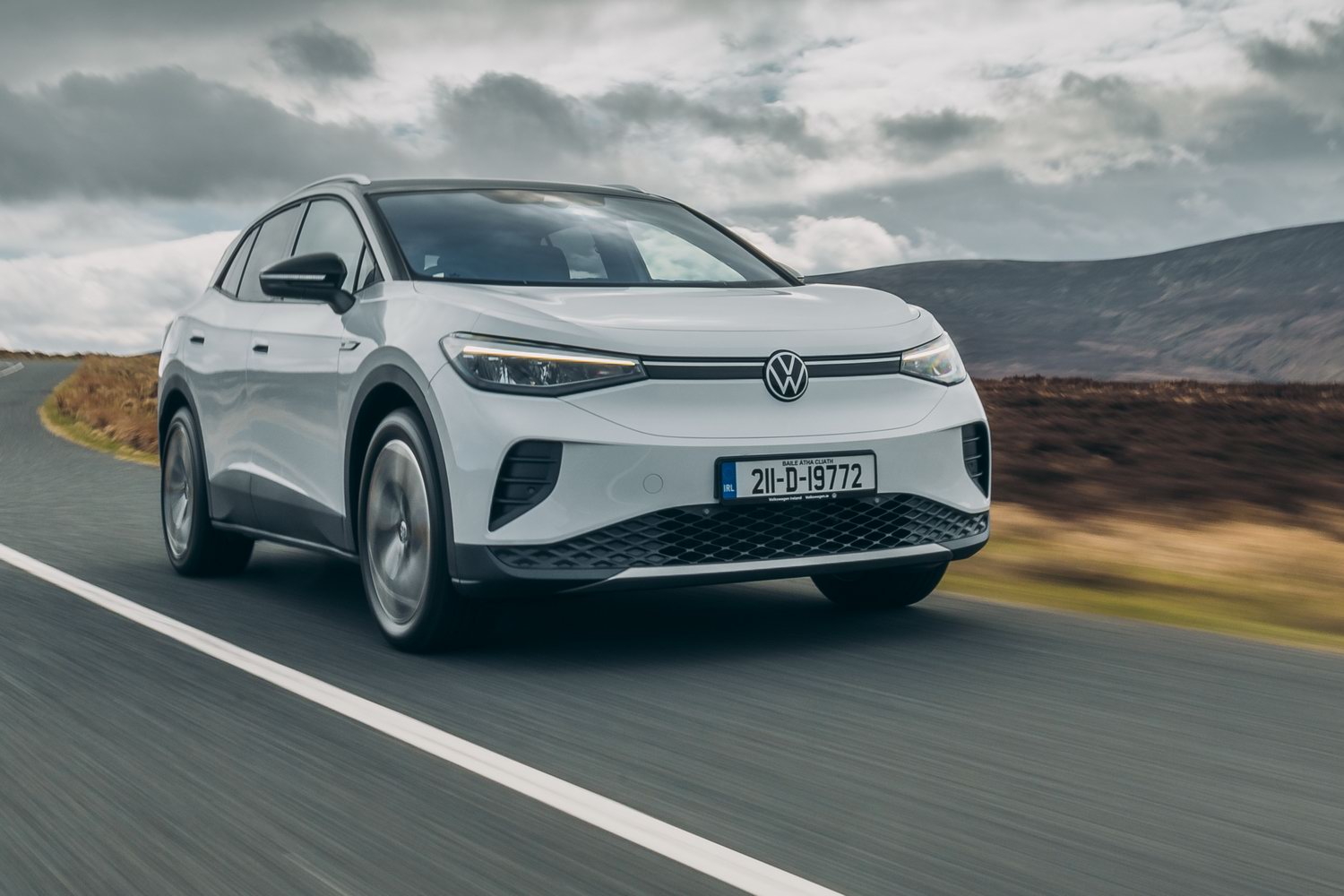Toyota's first all-electric car for Europe (and Ireland) will be hugely significant, not least as eventually seven all-new, all-electric vehicles will be spun off from the same hardware. Is it good enough to take on the Volkswagen ID.4 and Hyundai Ioniq 5? We took a test drive in a pre-production prototype on and off the road to find out.
In the metal
The Toyota bZ4X is interesting to look at. Not striking, nor OTT - there's none of the retro-cool look of the Hyundai Ioniq 5, nor the overtly sporting lines of the Kia EV6. Instead, what you get is a slight reinvention of current Toyota styling cues that results in quite a pleasing, if occasionally inoffensive shape. It's unsurprising that, for its first all-battery electric model, Toyota is playing relatively safe.
The best bit of styling is at the front, where there's a 'hammerhead' shape formed by the slim upper grille and the very slim LED lights (that have a faint hint of Alfa Romeo about them if you look deep into the lenses). Below, there are angular lines buttressed by rugged-looking dark-grey plastic panels. The sides are neatly sculpted, looking noticeably slim between boxy wheelarches, and at the rear there are slim taillights and a full-width light bar. Again, there's nothing too challenging here, but it's neat, tidy and looks suitably premium even under the ziggurat camouflage wrap of our early-build prototype test car.
Inside, there's quite a departure. Gone is the tall, bulky dashboard of the Corolla or the RAV4, replaced by something that's lower-slung, with an incredibly low windscreen line that allows the cabin to feel really rather airy. The driving position is very cockpit-like, hemmed in slightly by the tall centre console that rises up to meet your elbow. In the centre, and mounted close enough that it's never too much of a stretch, is a big 12.3-inch touchscreen running Toyota's latest, and very impressive, infotainment software. You get wireless Apple CarPlay and Android Auto as standard, and there's a wireless charging pad tucked beneath a semi-transparent lid on the console. Toyota has sensibly retained some physical buttons for heating and ventilation, a decision we roundly applaud.
The driving position feels oddly like a Peugeot's - the round steering wheel is quite small and seems to sit in your lap. It's not as dramatically small and low-slung as you'd get in, say, a 3008, but it's in the same ballpark. There's a simple, clear, slightly small digital instrument panel mounted high up, too, which negates the need for a head-up display.
In the centre console, you'll find two roomy storage areas - one under the armrest, along with two cupholders, and another space below the main surface, down by your knees. It's just as well that these spaces are roomy, as there's no glovebox in front of the passenger. The front seats are welcoming and comfortable, and visibility out, thanks to quite slim windscreen pillars, is good.
In the back, legroom is hugely impressive - leave the front seats comfortable for six-footers and similarly sized rear-seat occupants will have acres of oxygen between their knees and the backs of the front seats. Headroom is a little tight, though, if you have the optional panoramic glass roof fitted (the standard steel roof, or the optional solar panel roof, which may not be offered in Ireland, impinge less on rear headspace). While space is broadly good, there is a sense that the flat rear floor is mounted a little high, forcing the knees of taller passengers in the back to sit up higher than might be ideal for comfort. You do get seat heaters in the back in this top-spec Premiere model, though, along with USB chargers (there are three more USB sockets in the front to go with the wireless charger).
The boot holds 452 litres, which is on the small side for a car of this size (it's about 150 litres less than you get in a RAV4 for example), but it is well shaped. There's no 'frunk' as the entire front end on this predominantly front-wheel-drive model is taken up entirely with the electric motor.
Driving it
Toyota is, for now, only going to offer one battery for the bZ4X, a decision it says stems from trying to 'right-size' the capacity. It more or less splits the difference between the small and big battery models available from the Volkswagen Group and Hyundai and Kia, finishing up with a 71kWh useable capacity. The bZ4X, at the time of writing, still had not been officially homologated, but Toyota estimates that you should be able to get roughly 460km from a basic, front-wheel-drive model, and about 410km from the four-wheel-drive version we're testing here.
That cheaper bZ4X gets a front-mounted electric motor putting out up to 204hp to the front wheels, but the four-wheel-drive model gets twin 80kW motors. These are mounted in an integrated 'e-axle' unit that mounts all of the power and control systems into a tightly packaged setup that Toyota claims is around 30 per cent lighter than the motor in the Lexus UX 300e, but more powerful. In the bZ4X, the twin motors combine to make a 217hp maximum, with 336Nm of torque.
Neither of those figures is especially exciting, particularly when you learn that the bZ4X weighs a chunky 2.5 tonnes at the kerb. Accelerate hard, pushing the short-travel accelerator pedal to the carpet, and you get an initially impressive burst of low-down acceleration, but one that tails off quickly as you pick up speed. It's fine, but it's not thrilling. However, the twin-motor setup comes into its own, as we shall see...
Initial rolling refinement is very good. There's a slight sense of firmness to the ride quality on the passive dampers and steel springs, but while the bZ4X isn't quite as smooth and silent as the Volkswagen ID.4, it's not far off. Comfort and quietness are evident on the motorway, and long journeys should be quite easy in the Toyota.
Where the bZ4X really scores is when the roads become a bit more challenging. Hitherto, when a car maker launched a new electric car, we usually expected the event to take place somewhere flat and unchallenging - The Netherlands, usually. Not so the bZ4X. Toyota brought us to Barcelona, and pointed us up the steep, twisty mountain roads that climb up behind the city. To say the bZ4X was up to the challenge is putting it mildly.
The Toyota doesn't quite have the overtly sporting steering and chassis responses of the Ford Mustang Mach-E, but it's really not far off, with a delightfully smooth, liquid response to the steering (even if there's not much actual feedback). What's truly brilliant is how it manages to disguise its weight; pile into a series of tight S-bends, and the bZ4X shrugs off its mass, and allows you to effortlessly nail every apex, turning in sharply and keenly every time. It's quite the performance, even if it's well outside the normal driving environment for most owners. Anyone who buys a bZ4X who lives within striking distance of Moll's Gap will not be disappointed, though.
Here, the all-wheel-drive system feels stronger, allowing you to punch and jab at the corners with quick-reacting lunges of extra torque and power. It's not thrilling, but it's certainly much more fun than your average electric car. There's a switchable one-pedal driving mode, which is quite unobtrusive - it slows the car noticeably, but not abruptly, and you'll still need to use the brake pedal to come to a full stop.
Equally surprising is the bZ4X's performance off-road. Again, few if any owners will actually put it through its off-road paces, but the Toyota shares a chassis and electronics with the Subaru Solterra, and it was Subaru (with its lengthy all-wheel-drive and off-roading experience) that was given the lead in making the two cars suitably mud-ready. OK, so Toyota had carefully laid out a course for us to drive that was going to be within the car's limits, but the mixture of dirt track, rocks, steep ascents and descents, deep mud and a water splash (the bZ4X can wade through up to 500mm of standing water) showed that it can perform way above the expectations of any owner. Thick, slimy mud needed only a prod of the X-Mode off-roading button to get the bZ4X un-stuck and moving again, and that was on summer-spec road tyres. With proper off-roading rubber, it might well be entirely unstoppable.
Next year, Toyota will offer the bZ4X with a high-tech steer-by-wire system, which cuts the physical connection between steering wheel and wheels, and leaves you with a chopped-off control yoke, instead of a steering wheel, which never requires you to give it more than just over half-a-turn for full lock either way. The claim is that it improves high-speed stability and low-speed agility, but it might feel more than a little odd at first. We'll have to wait and see.
When you've exhausted all of the driving time, the bZ4X will recharge at speeds of up to 150kW from a rapid DC charging point, but it doesn't have the ultra-high-speed 800-volt charging of the Hyundai or Kia. Then again, Toyota says that its battery design is as much about longevity as it is performance...
What you get for your money
Speaking of which, Toyota will offer quite the warranty for the bZ4X's battery - 1,000,000km and no, that's not a typo. As long as you pop back to your Toyota dealer for a regular battery health check, Toyota will guarantee the battery will retain 70 per cent of its original performance for a million kilometres, or ten years, whichever is sooner.
Beyond that, the bZ4X will be well-equipped. Base 'Advance' models start at €43,402, will get an eight-inch touchscreen and the impressive new software, lane keeping assistance, adaptive cruise control, reversing camera and intelligent parking assistance, along with the driver alert monitor. Mid-spec Sport versions (which Toyota Ireland expects to be the big seller) will have the bigger 12.3-inch screen, powered tailgate, heated steering wheel, wireless phone charging, wireless Apple CarPlay and Android Auto, heated front seats, adaptive LED headlights with auto high beam, privacy glass and ambient lighting. Prices for the Sport version start from €47,935.
Premiere Edition models get 20-inch alloys, blind spot monitor, enhanced autonomous emergency braking, panoramic parking camera, synthetic leather upholstery, cooled front seats, the panoramic glass roof and power-fold door mirrors. Pricing for the Premiere models will start from €52,910.
At first, all bZ4Xs will come with 6.6kW AC charging, but that will be updated next year with 11kW AC charging. Early customers won't be able to upgrade their cars to the faster charger though.
The upgraded electronic safety package, which Toyota calls 'T-Mate', includes active steering assistance, junction monitoring (to prevent you turning into the path of other vehicles), door-opening warning (if a cyclist is coming up in your blind spot, for instance) and a surround-view parking camera setup. There's also a new driver monitoring system that checks for fatigue and attentiveness, but can also detect if you've become ill and slumped in your seat.
Summary
Toyota really needed its first major EV effort to be right, straight out of the gate. That, it has certainly accomplished. The bZ4X is really incredibly good to drive, should have eminently useable battery performance for most, looks smart and has a spacious interior. It also seems to be priced about right. This looks set to be a massive hit.

